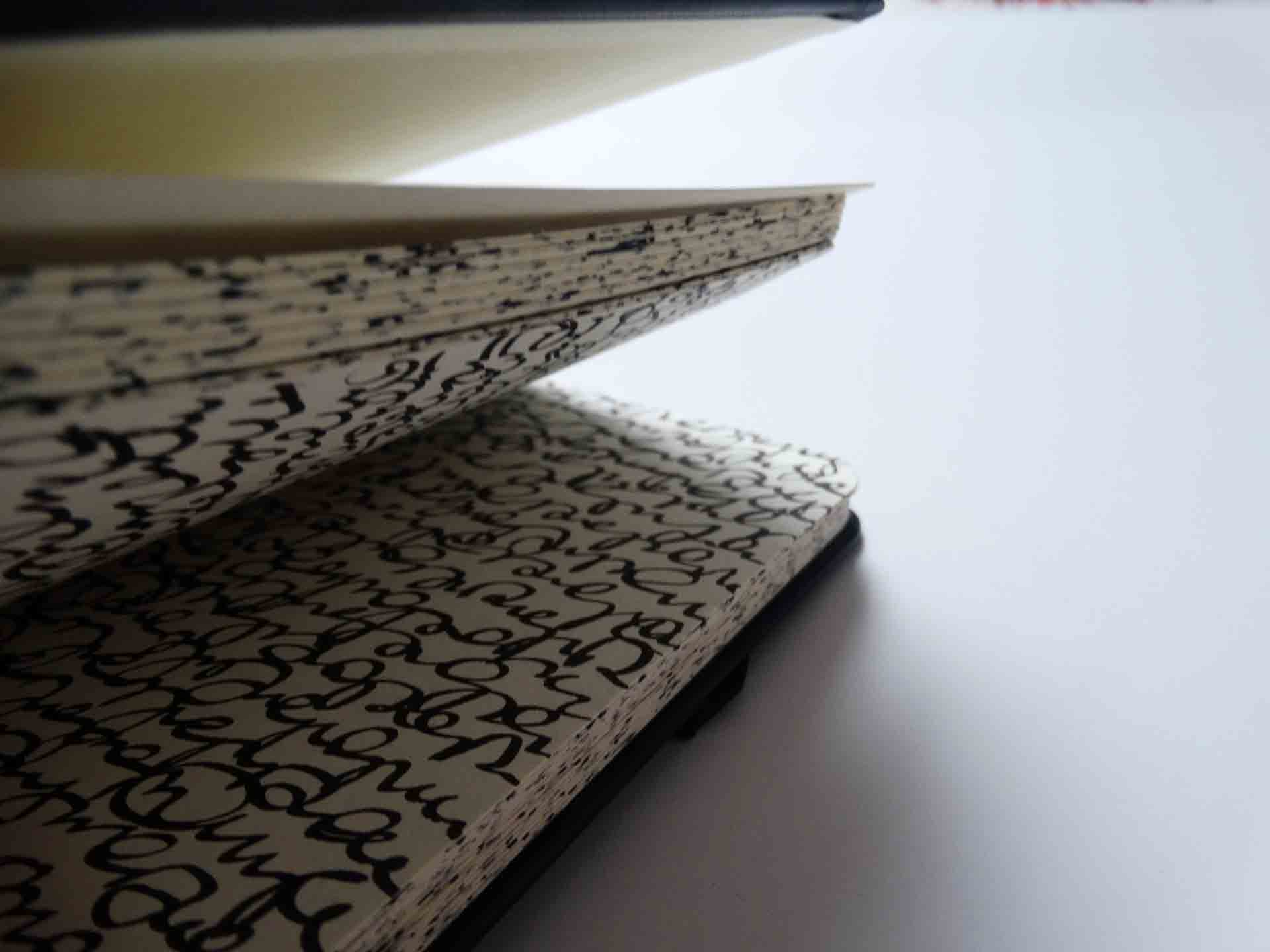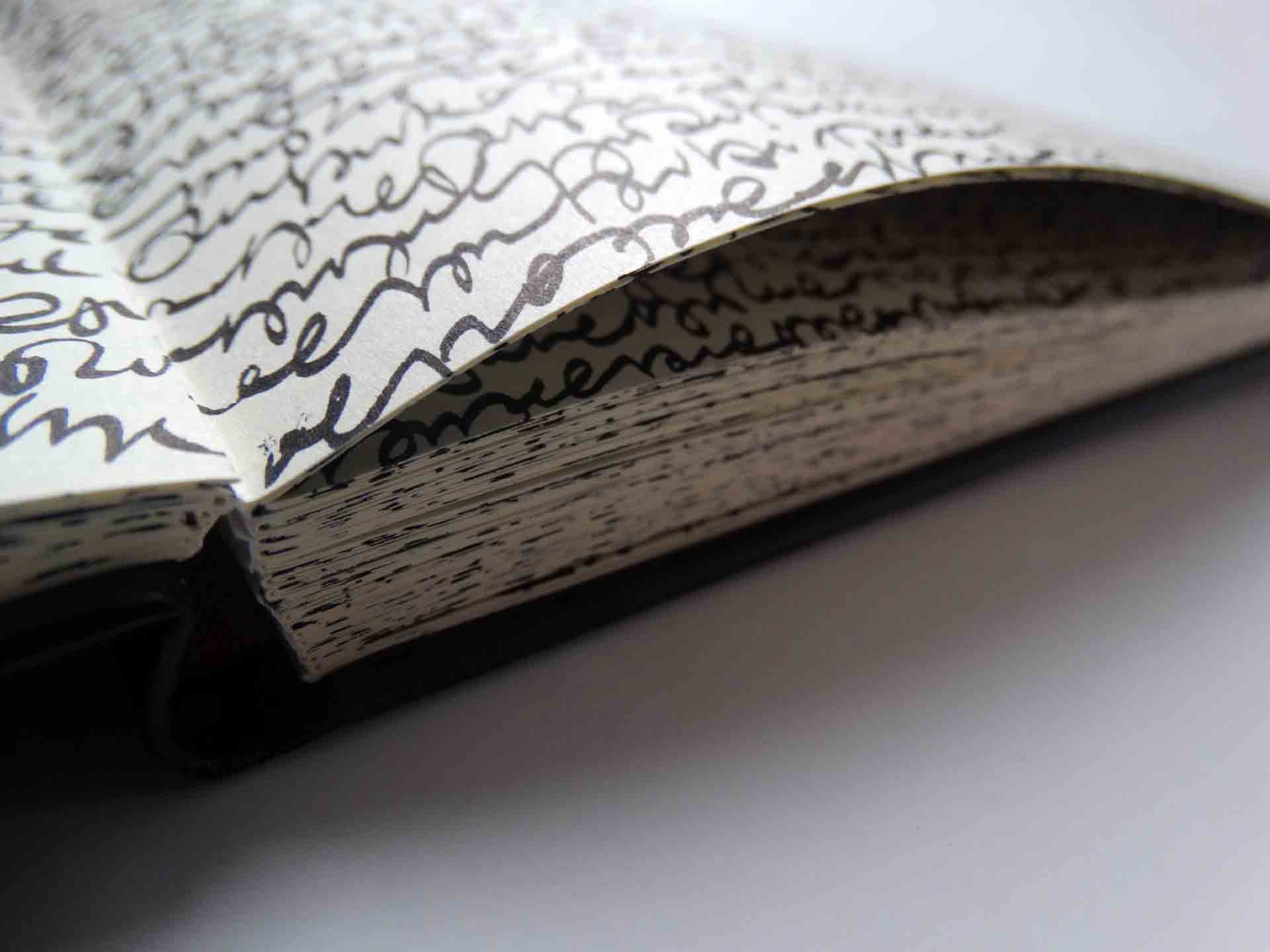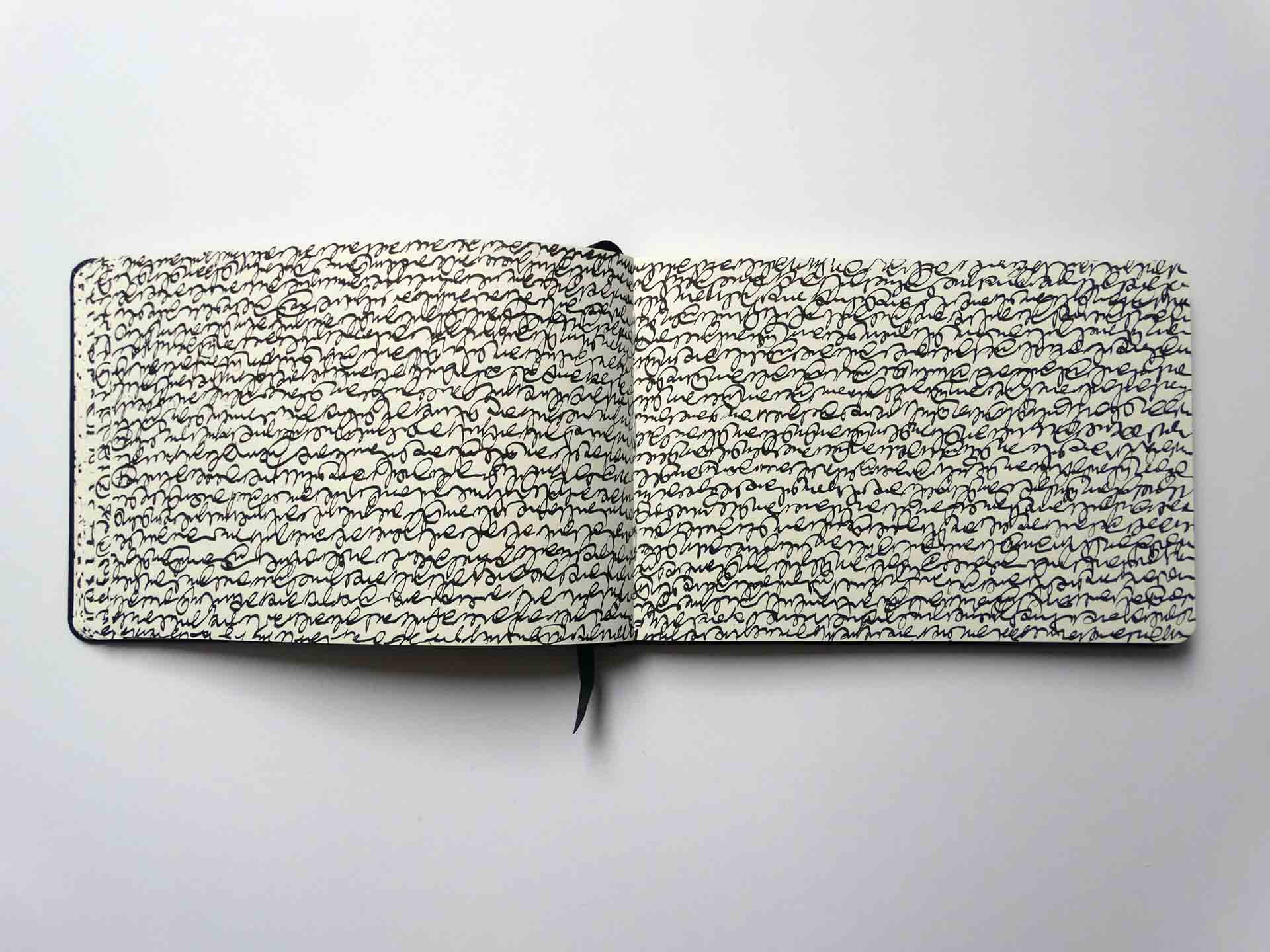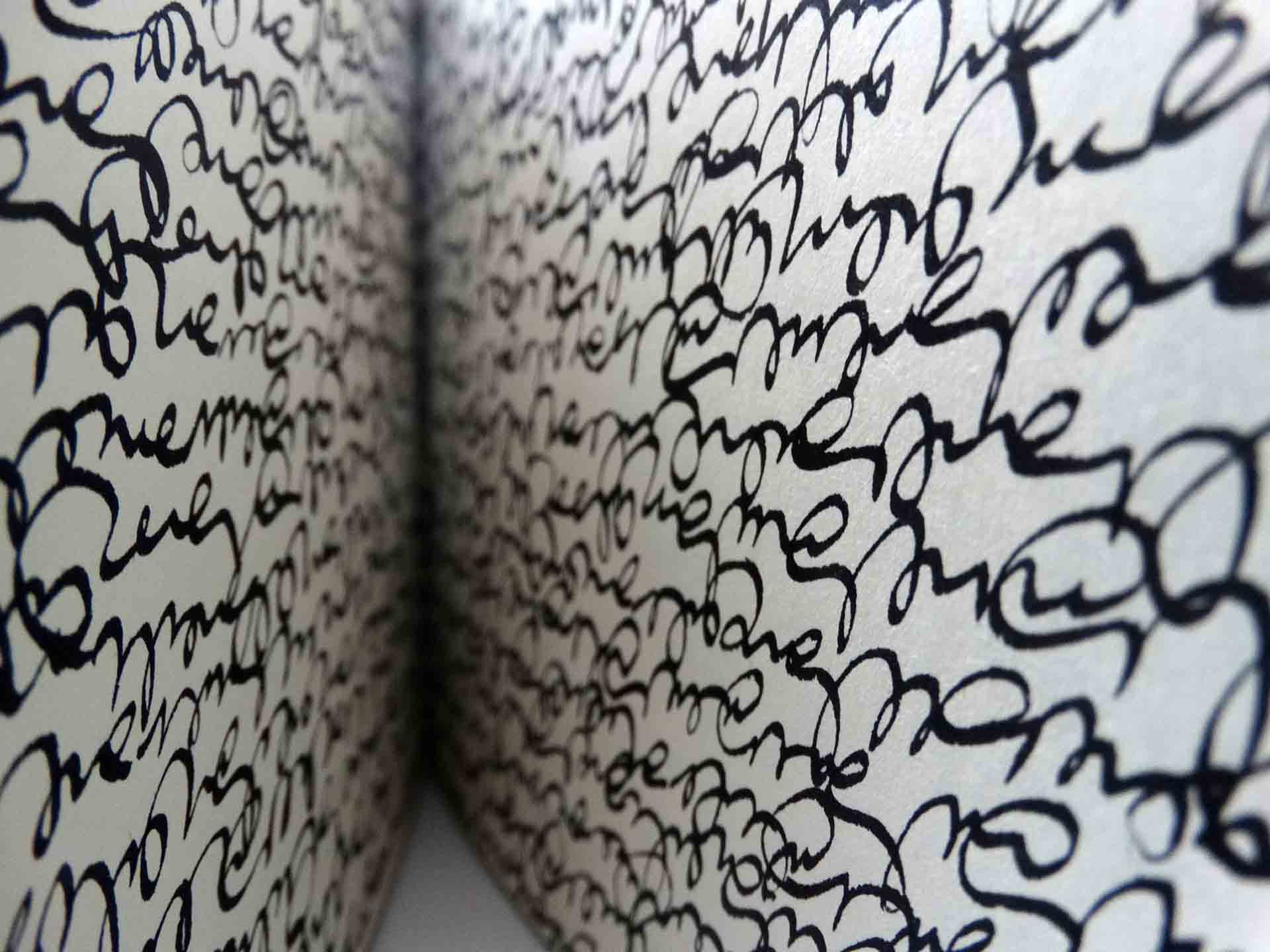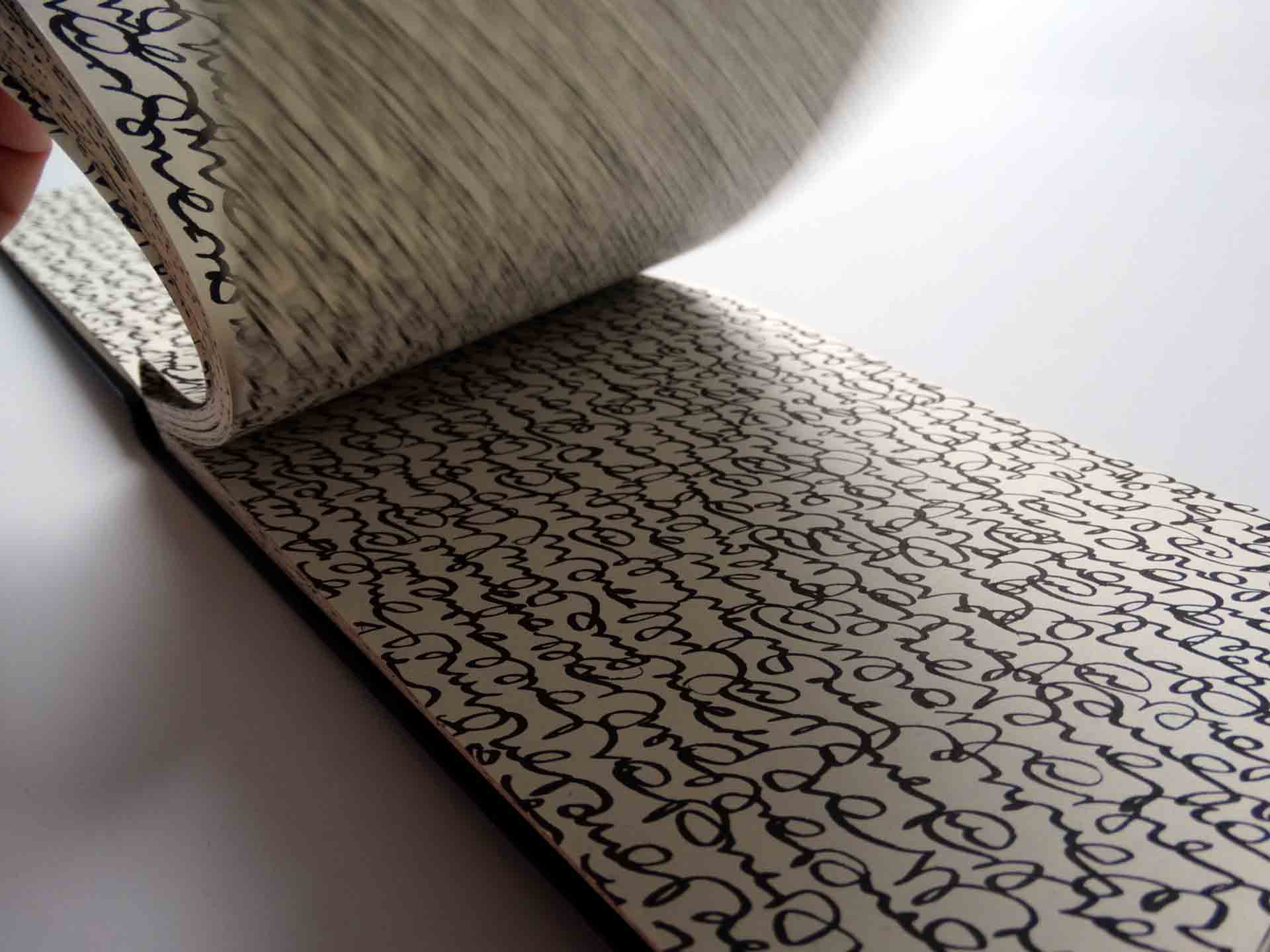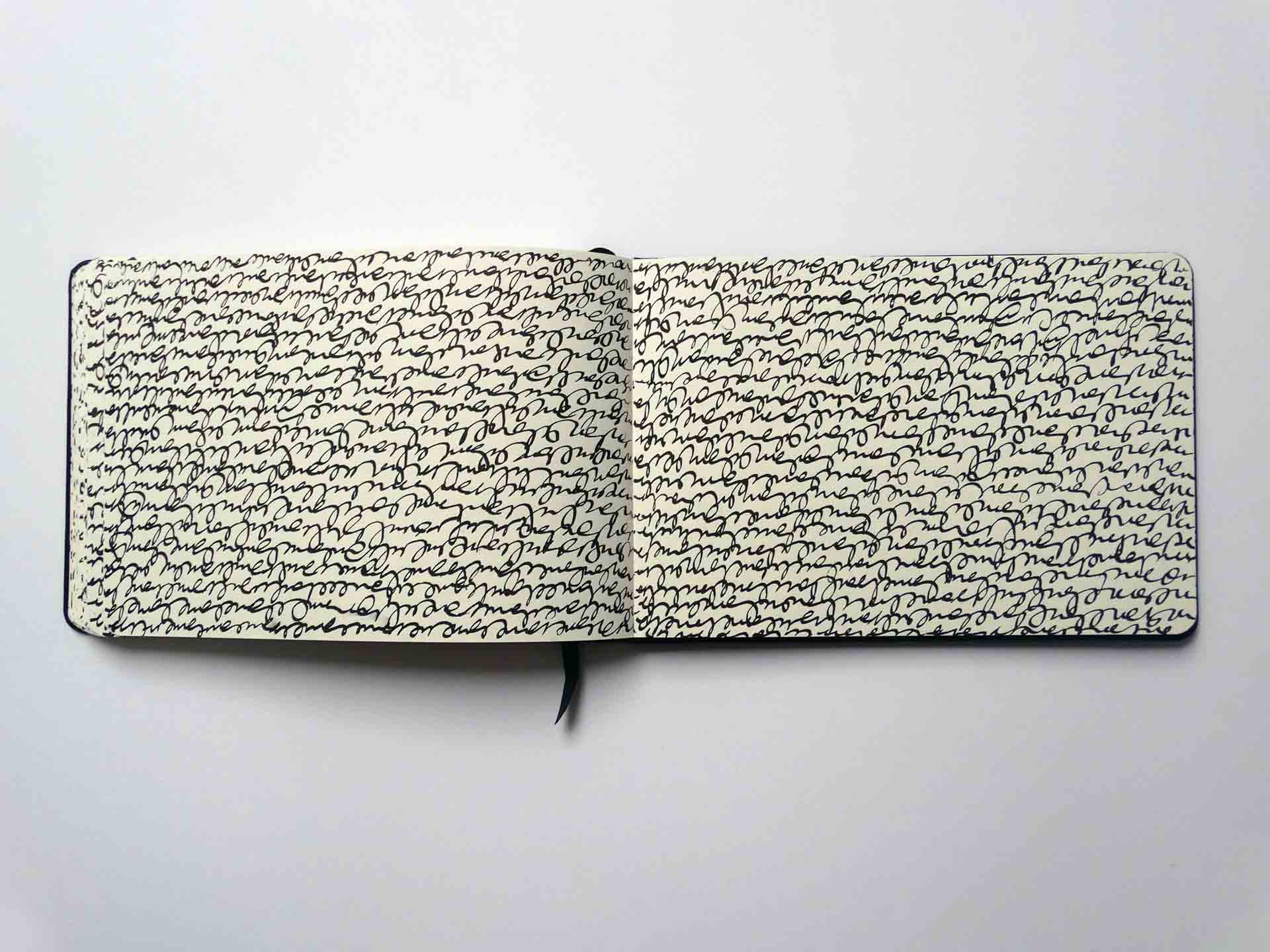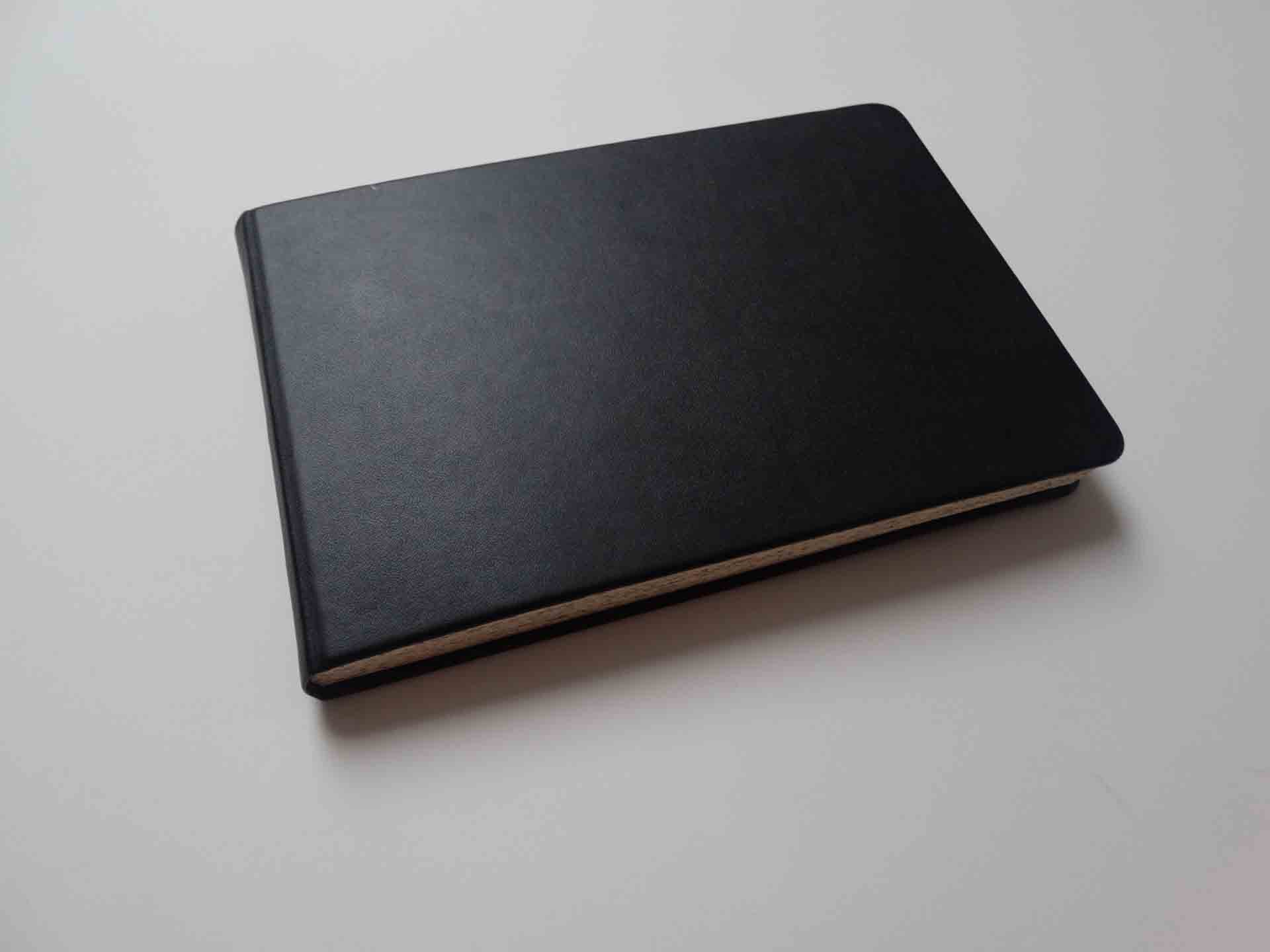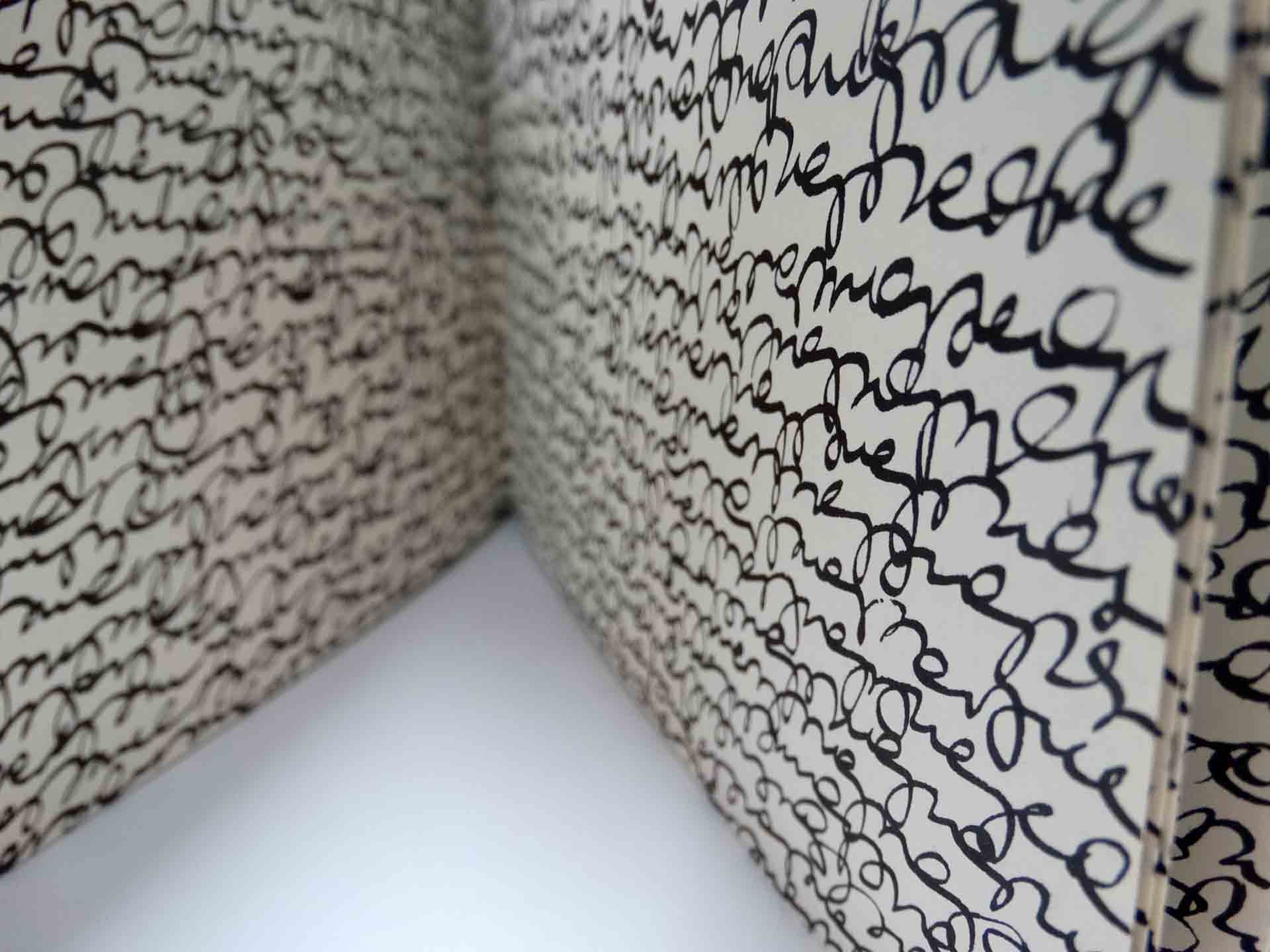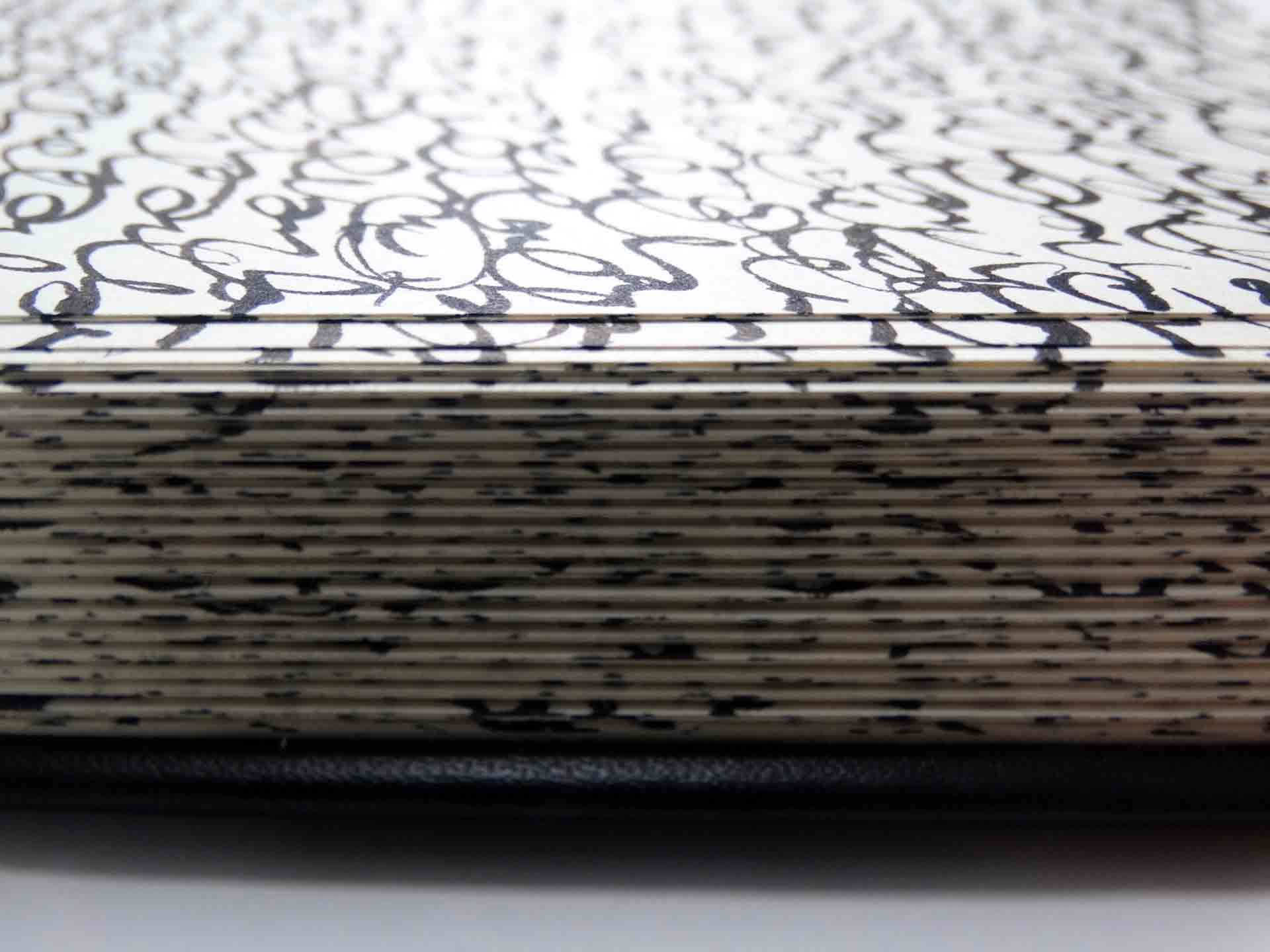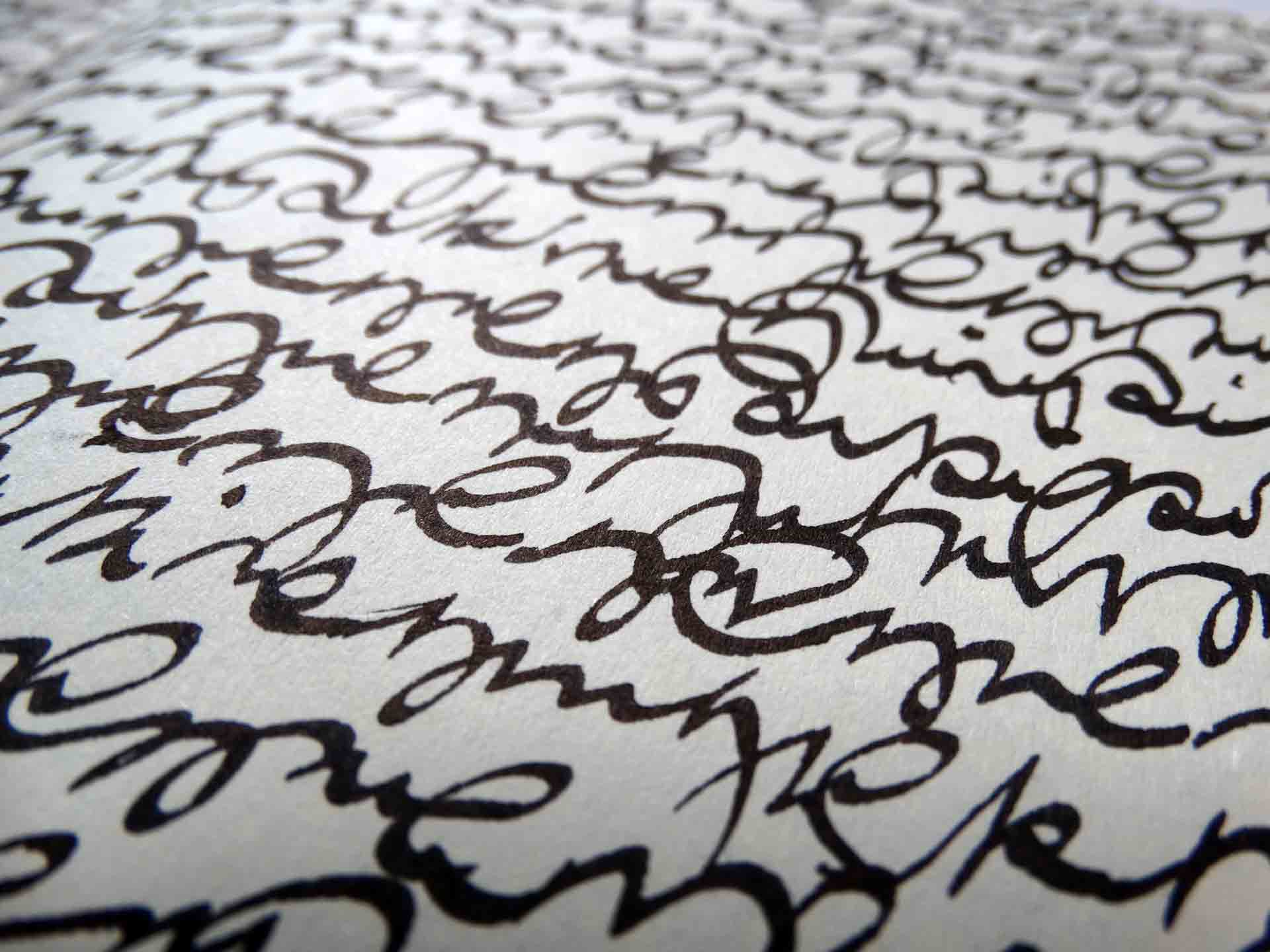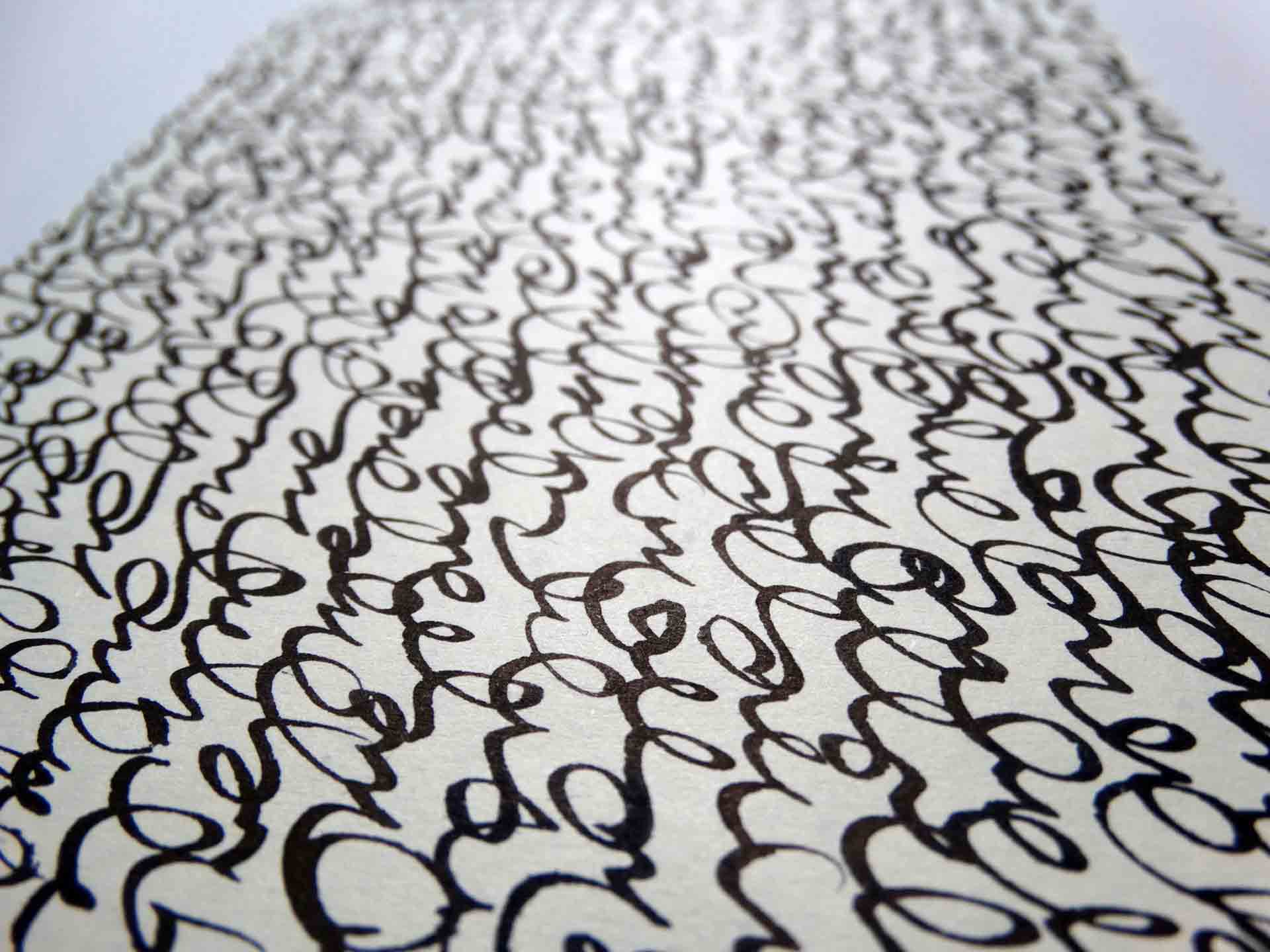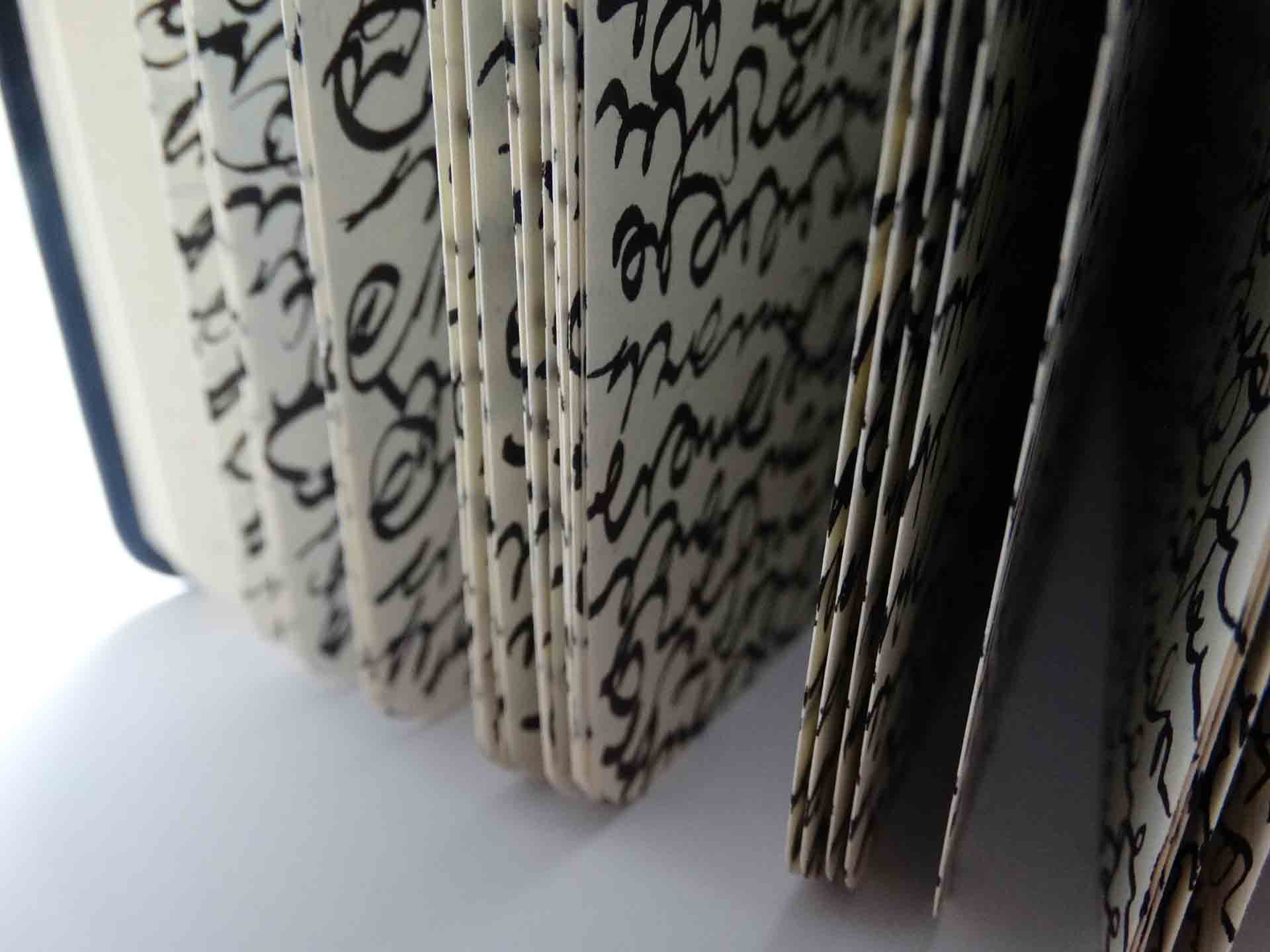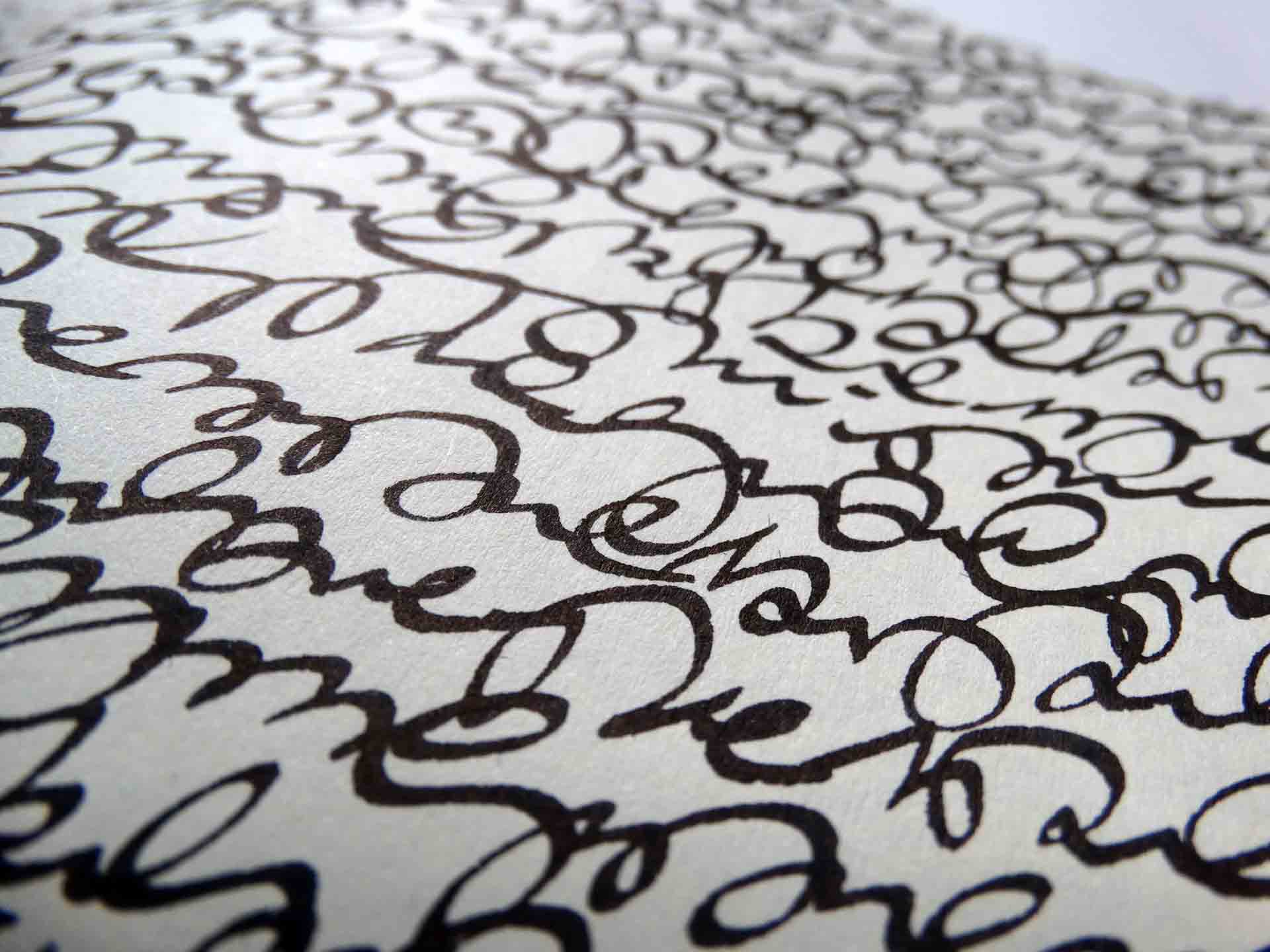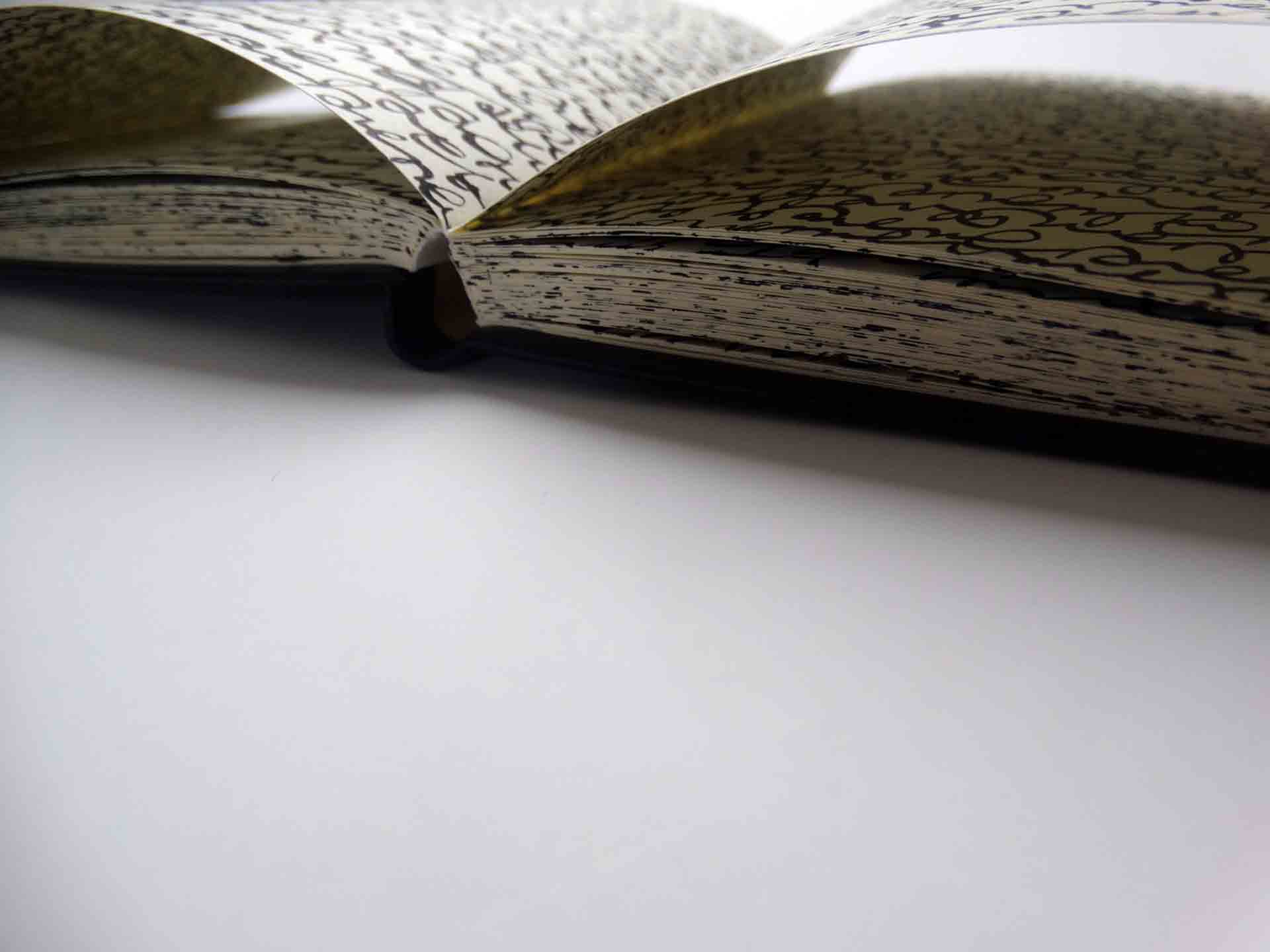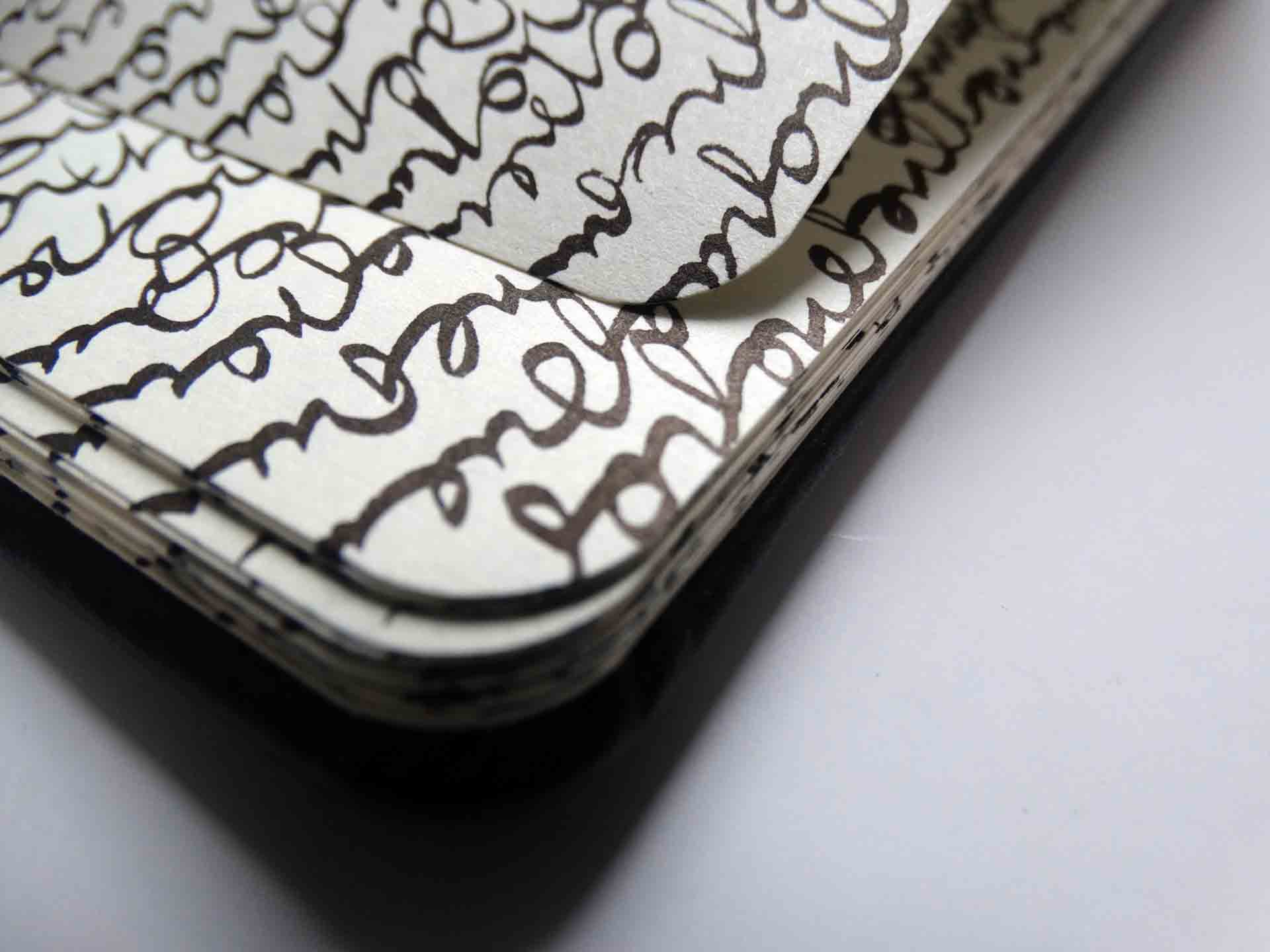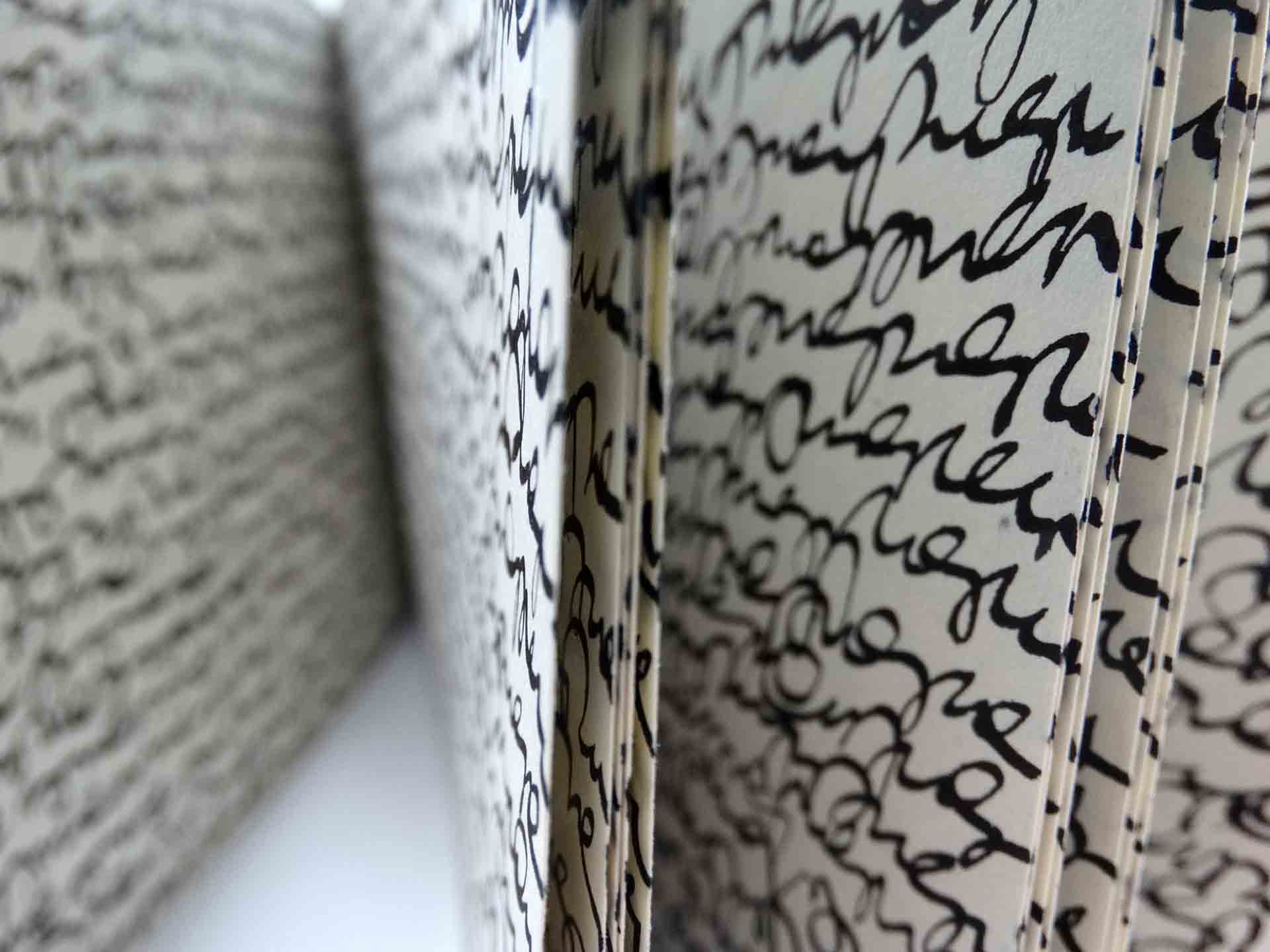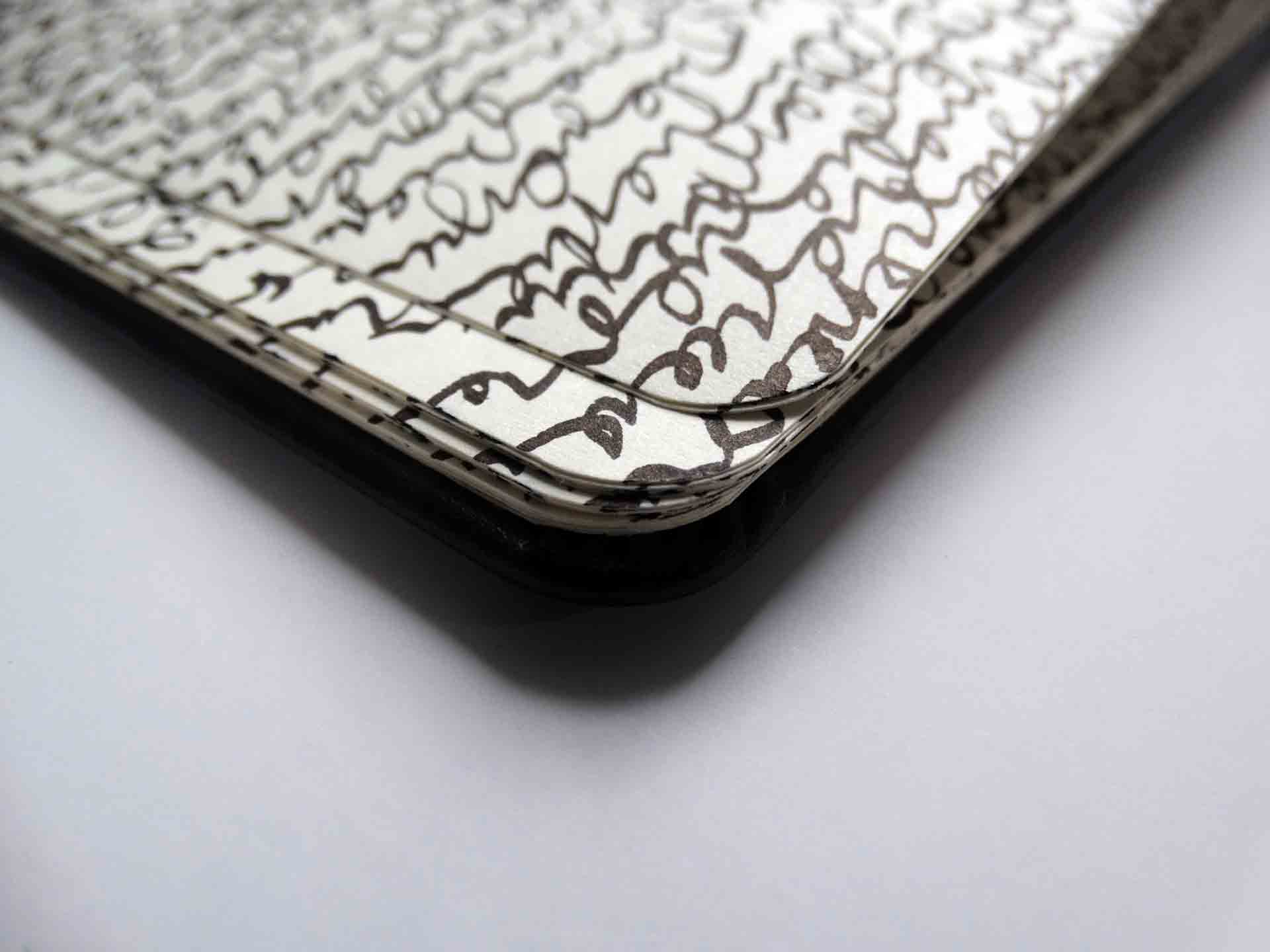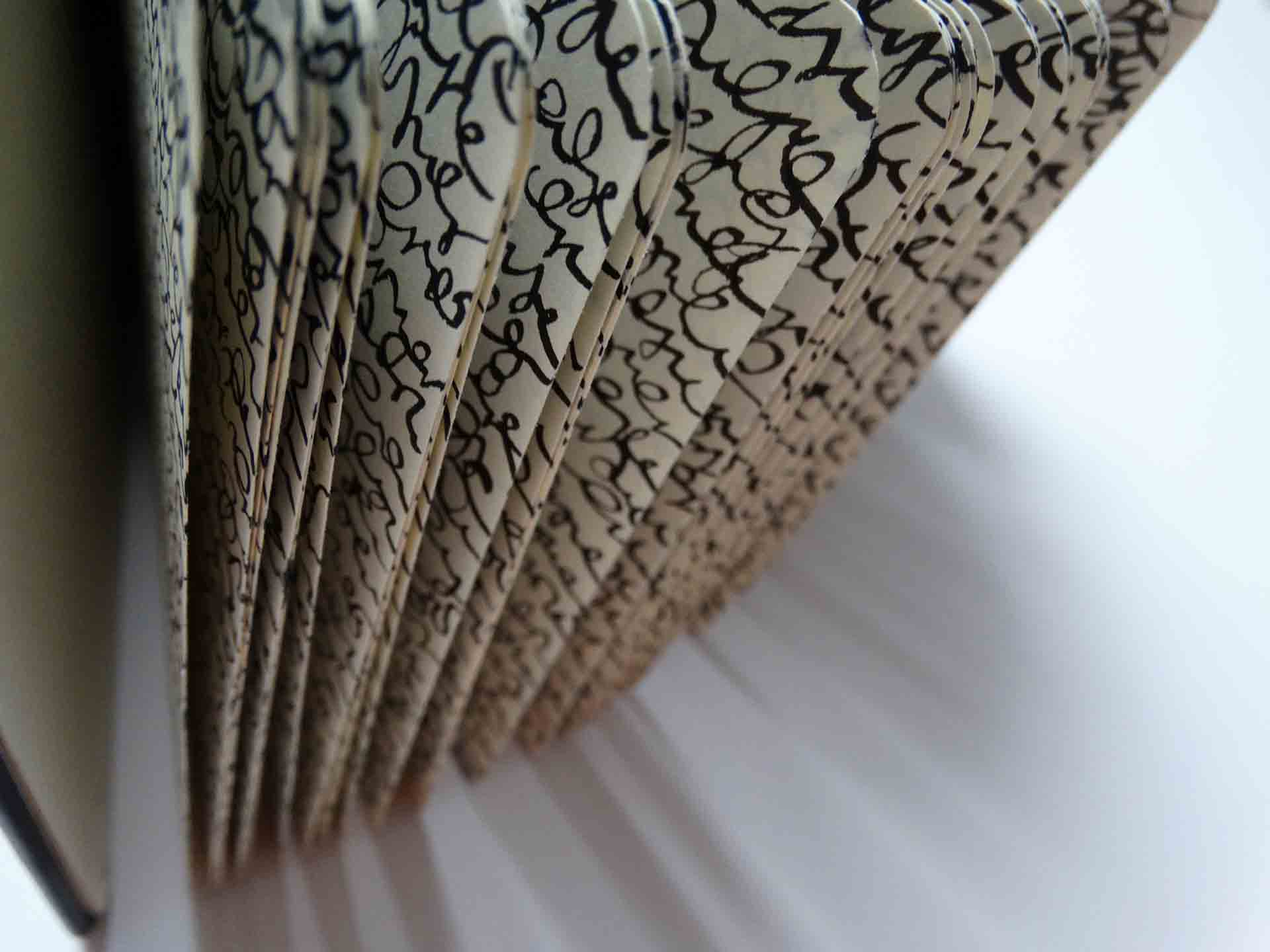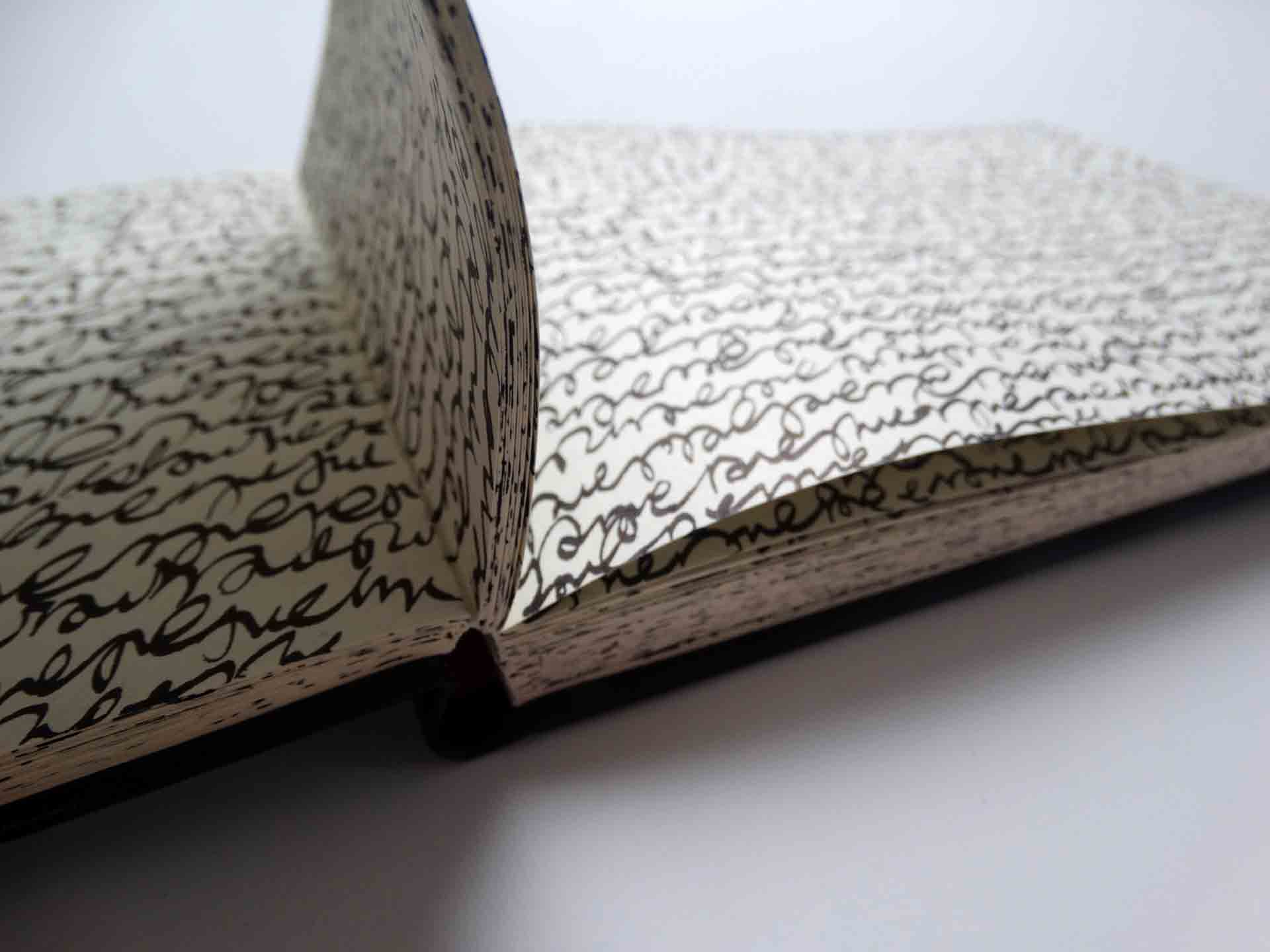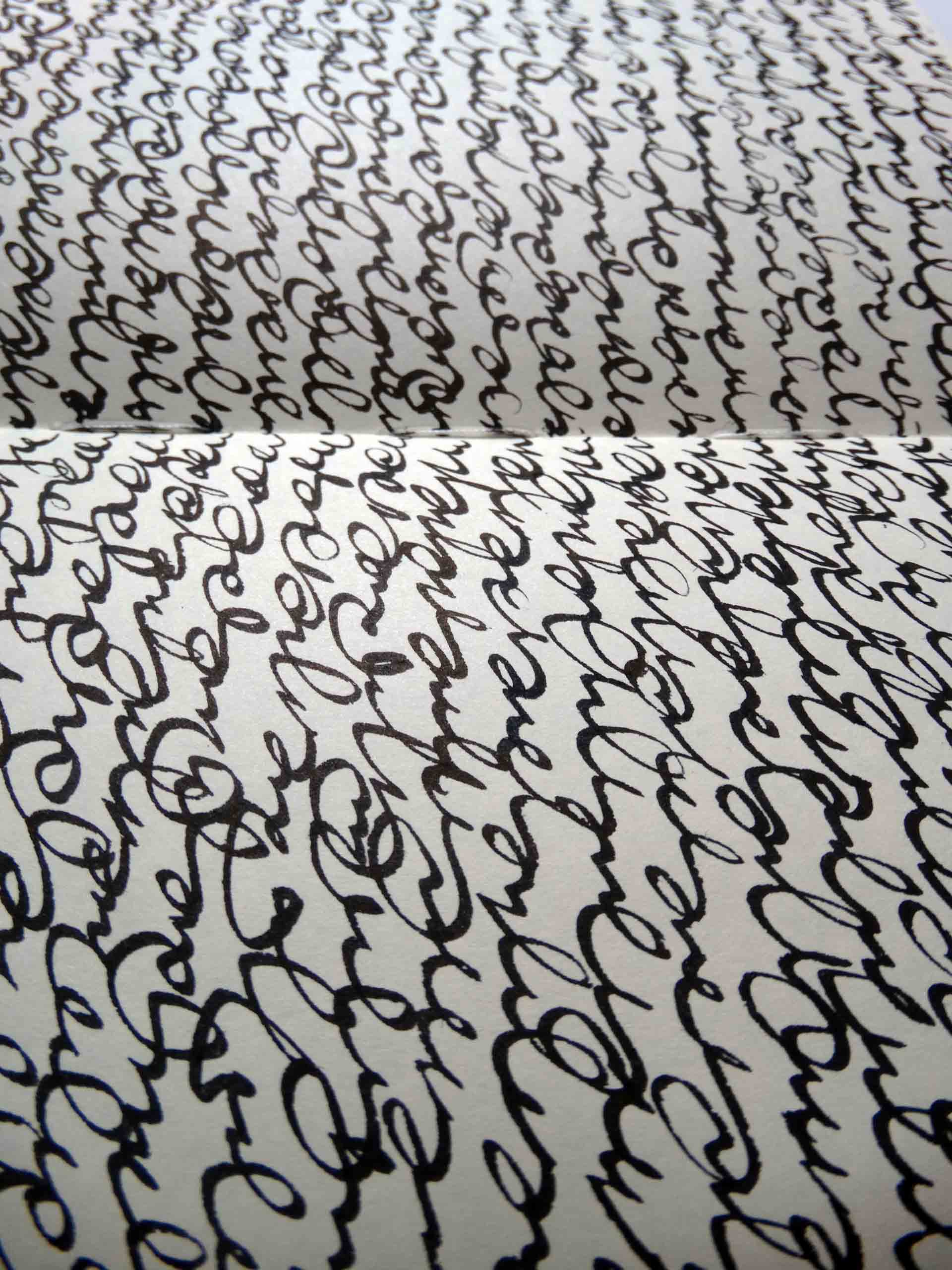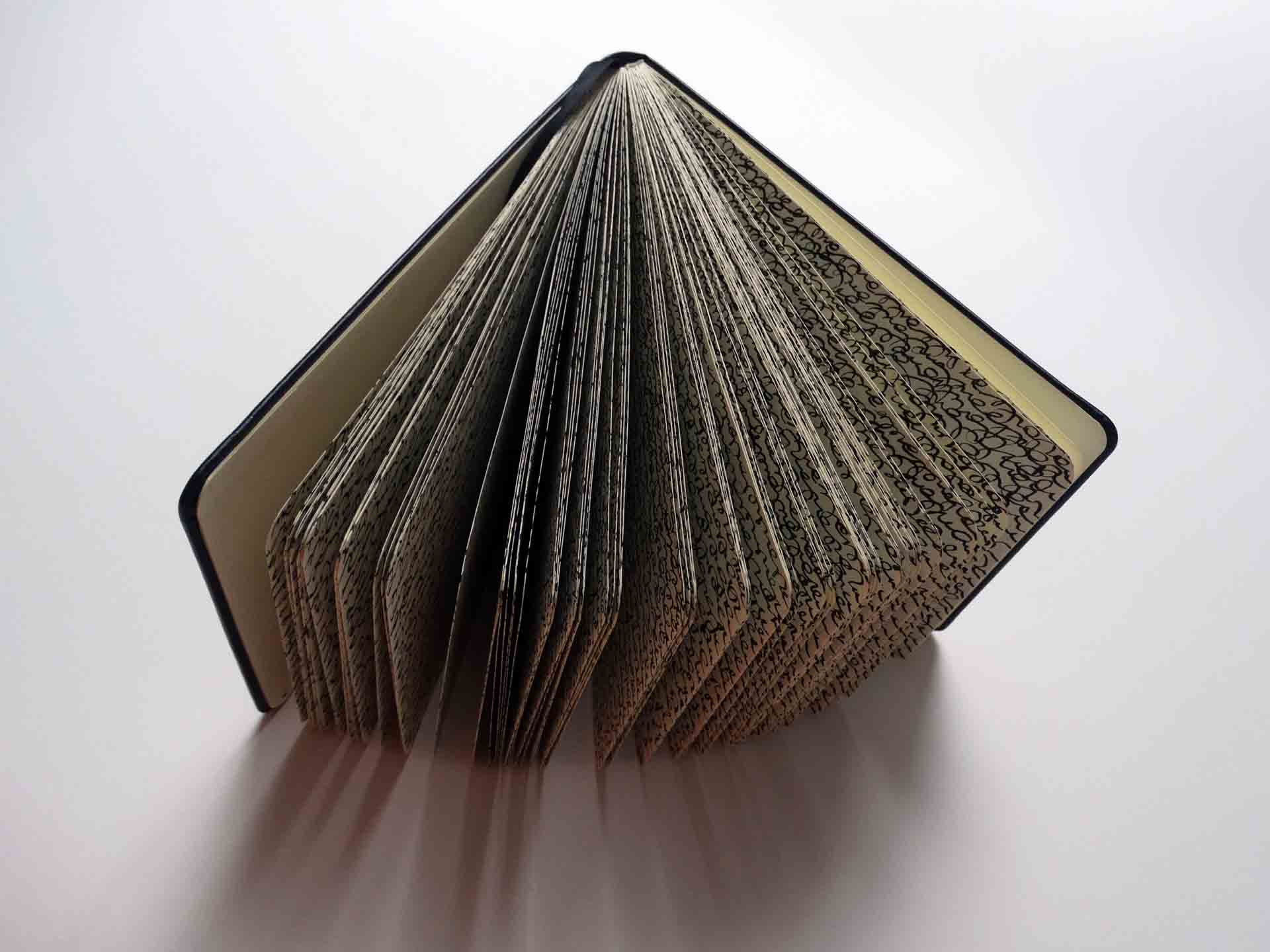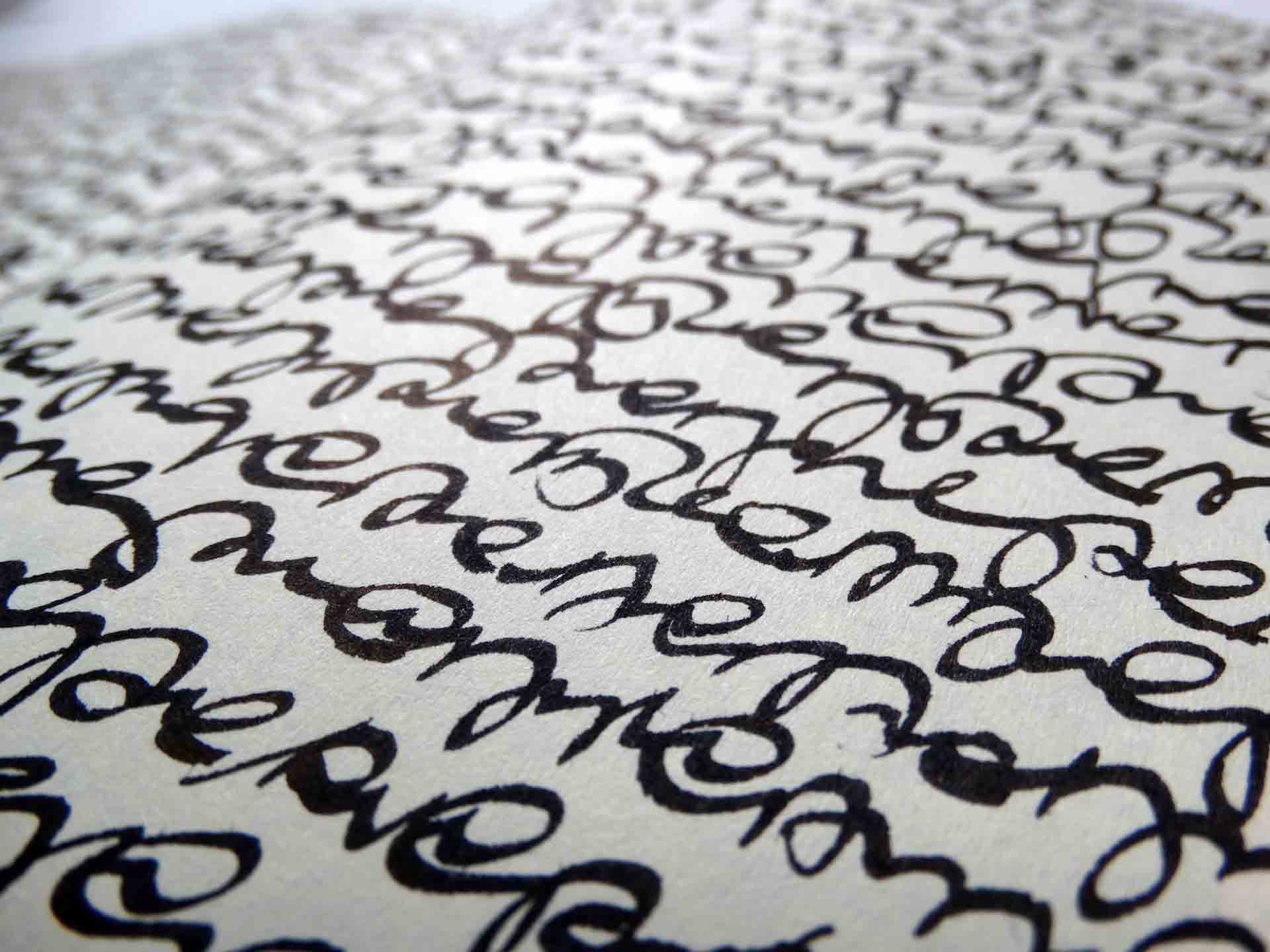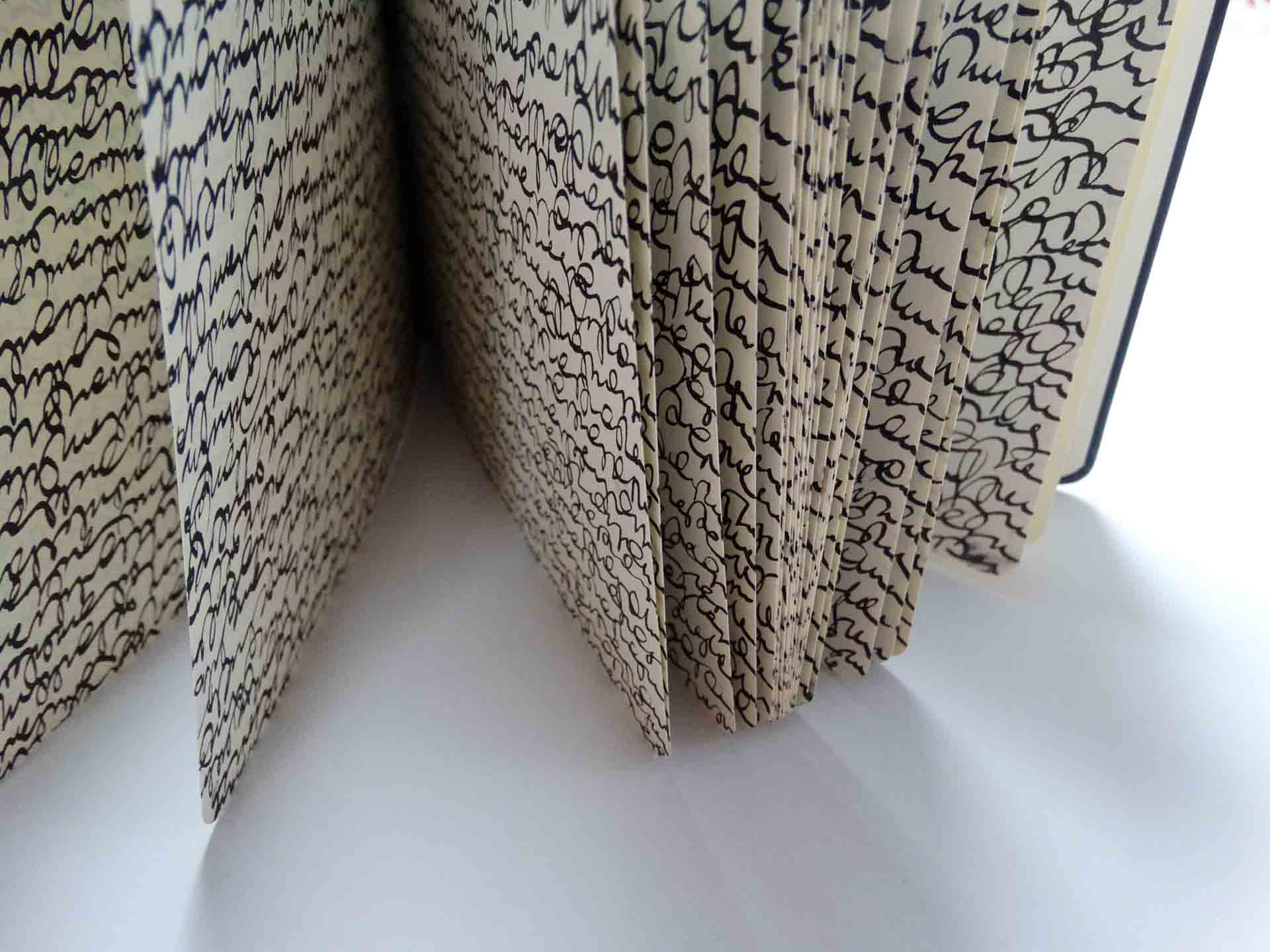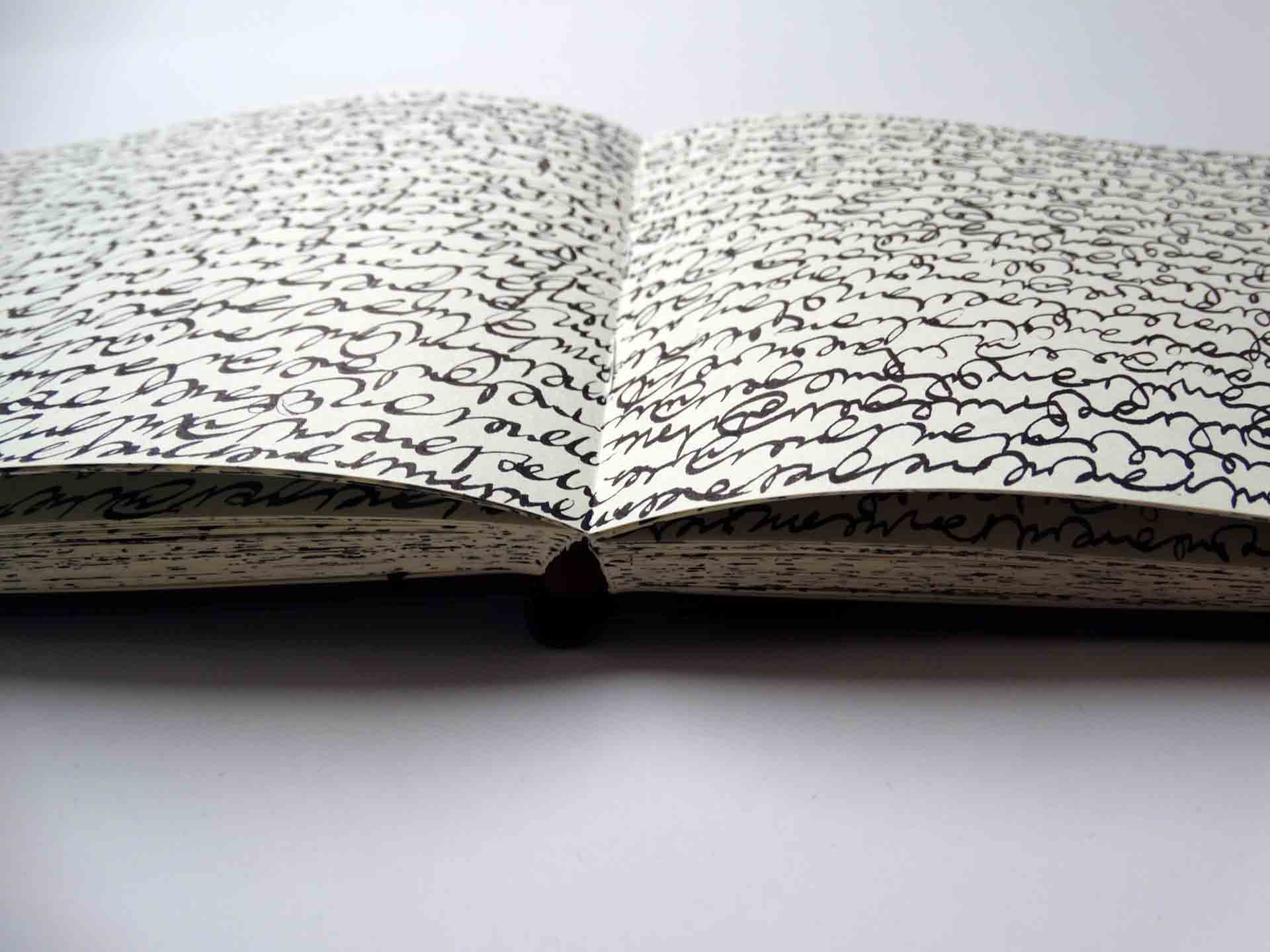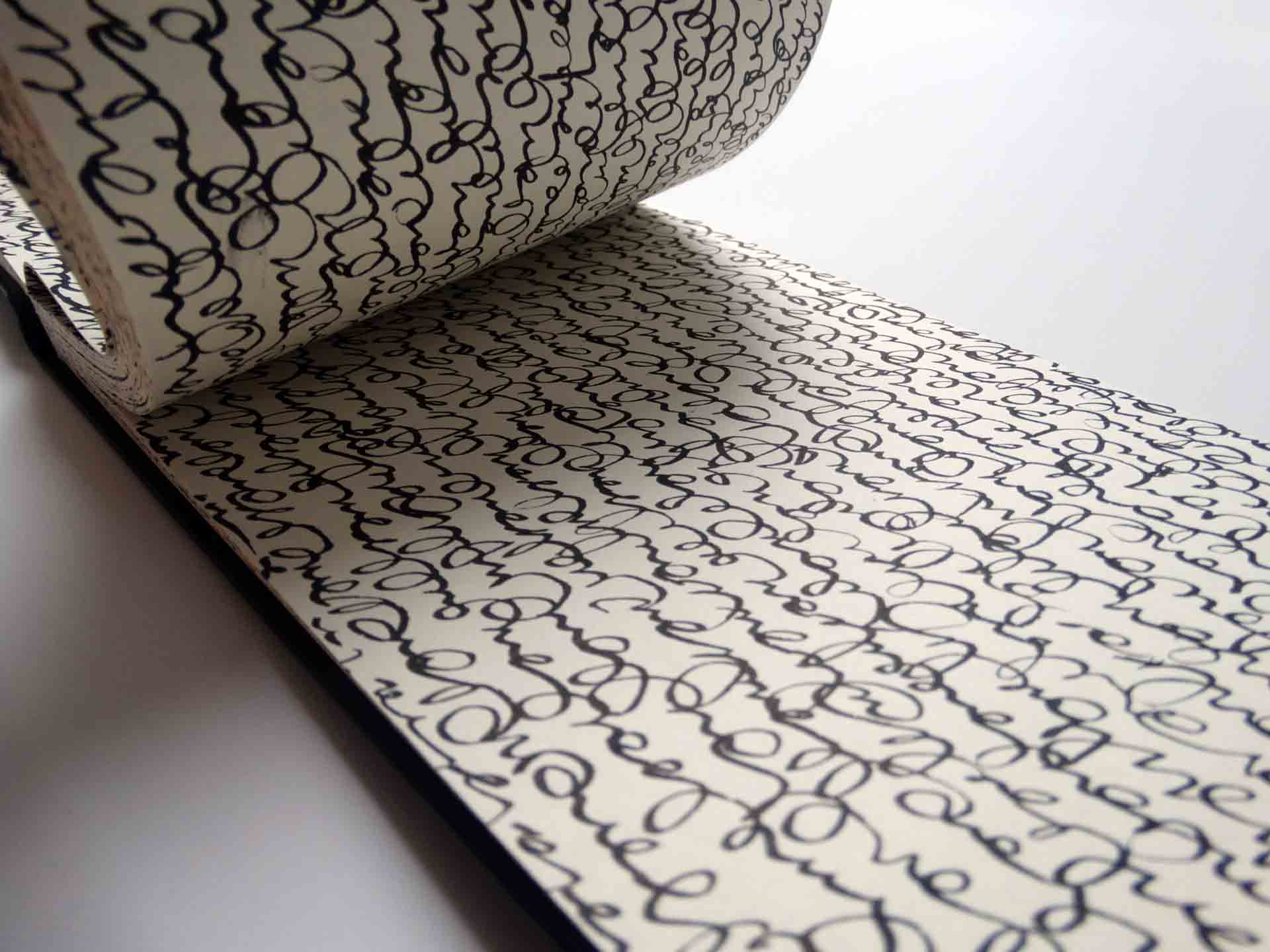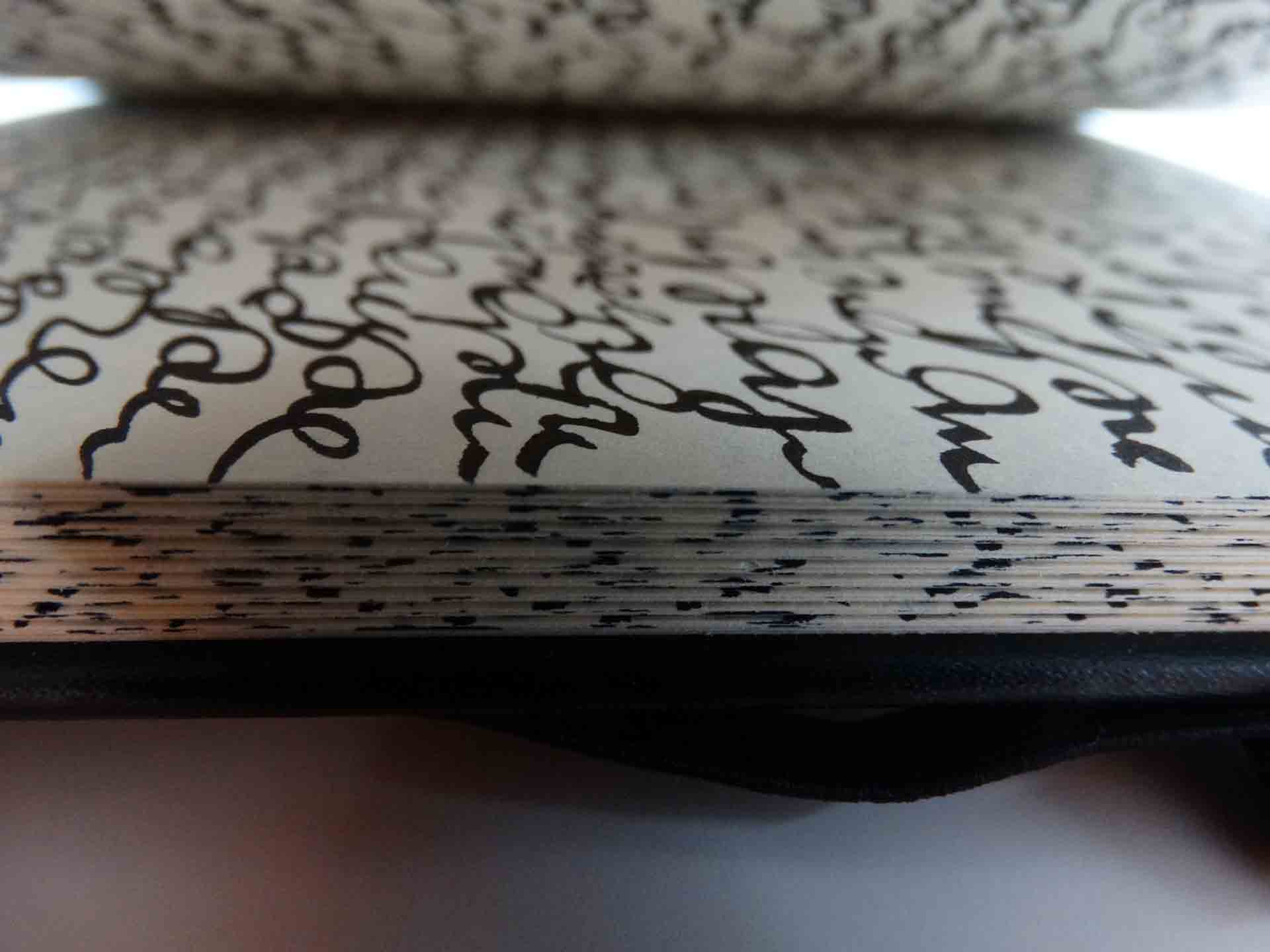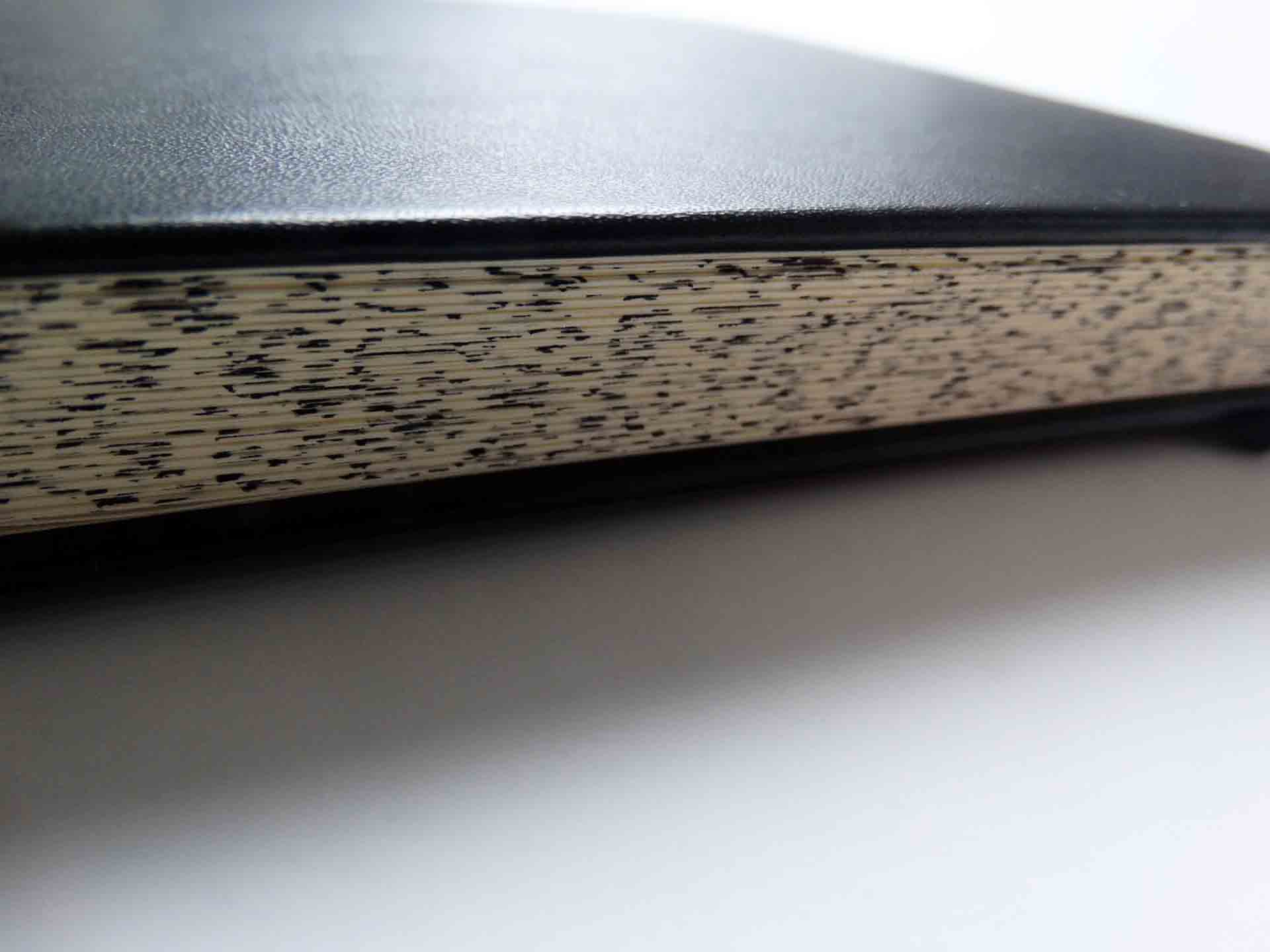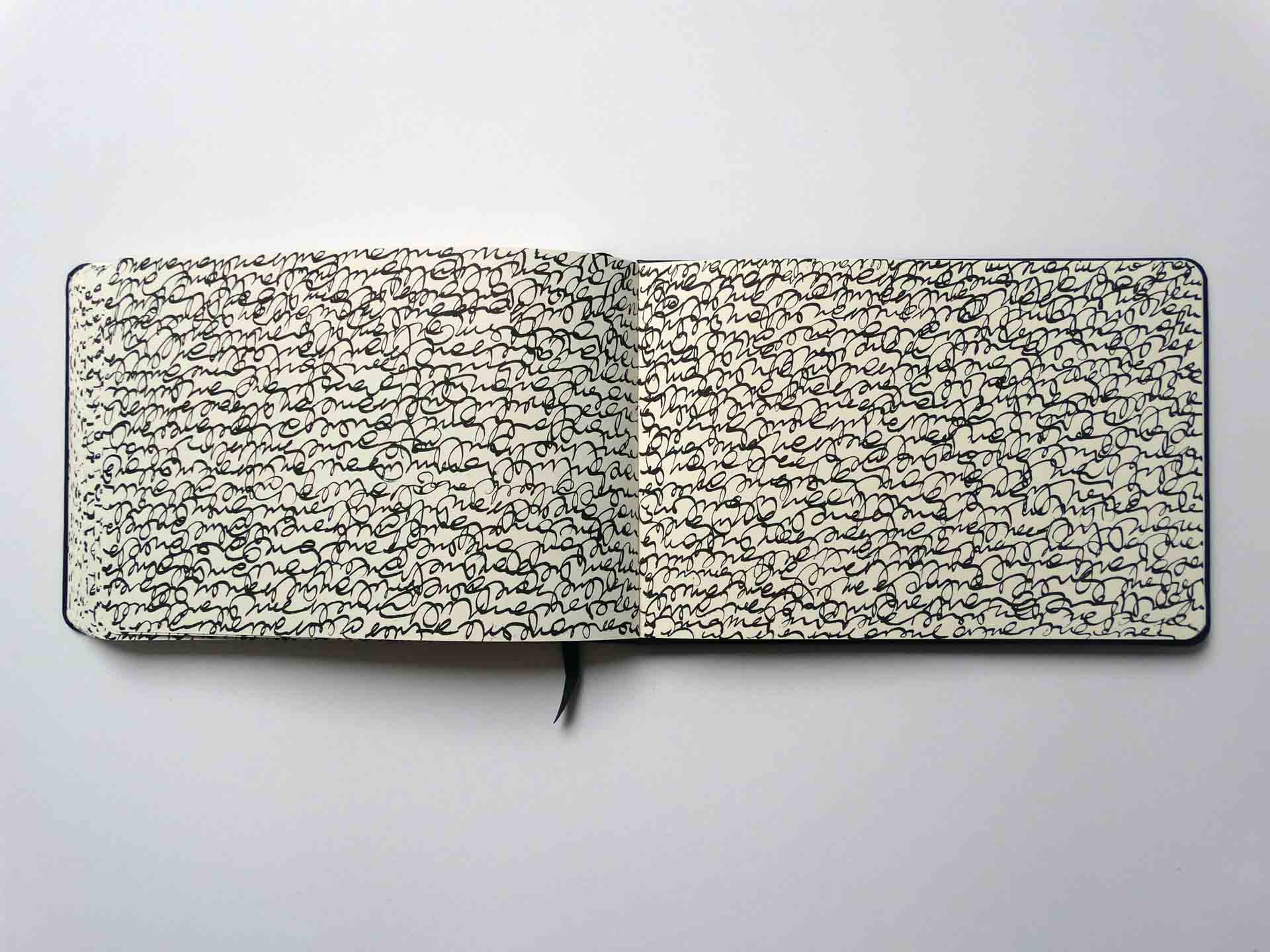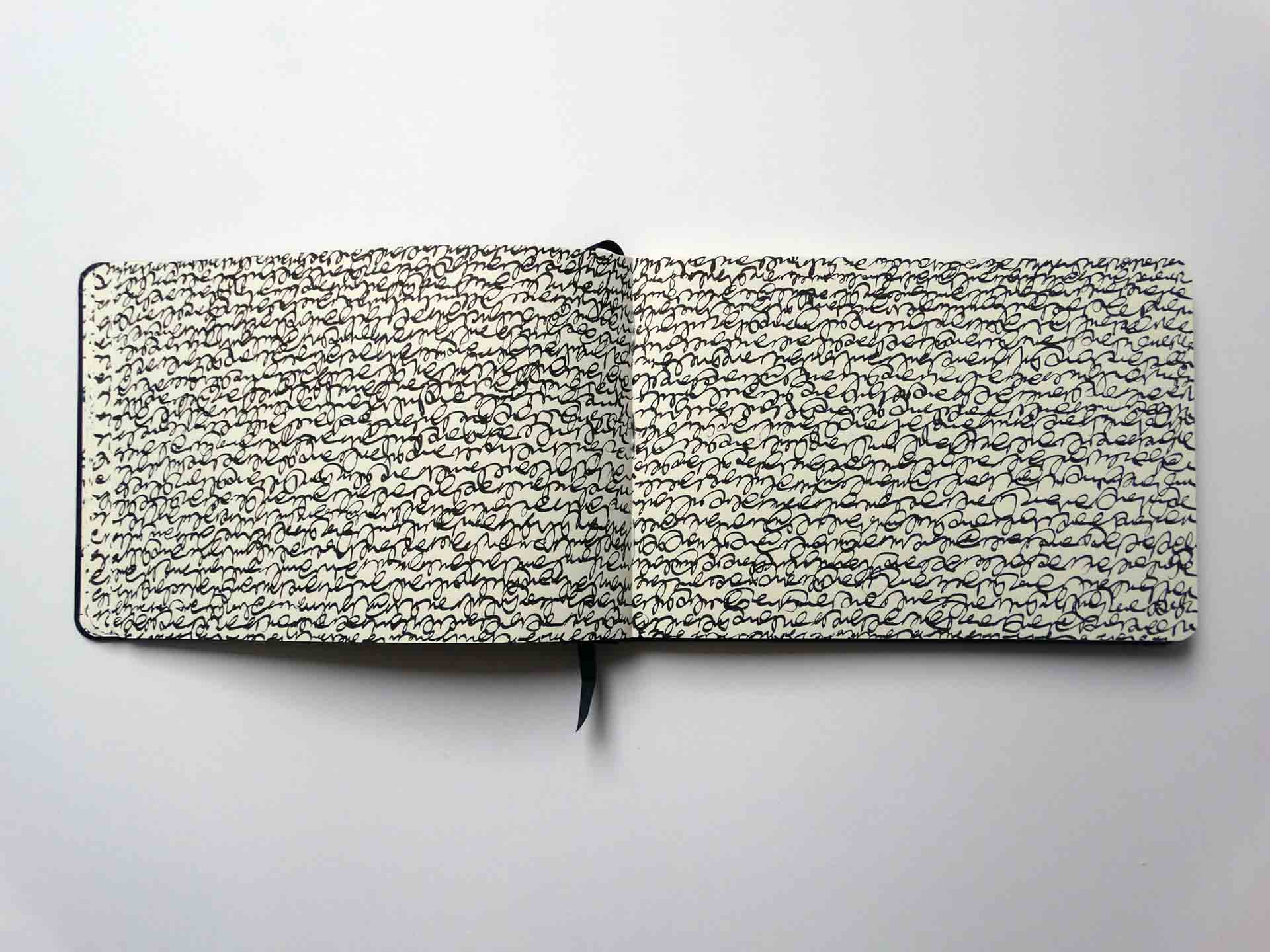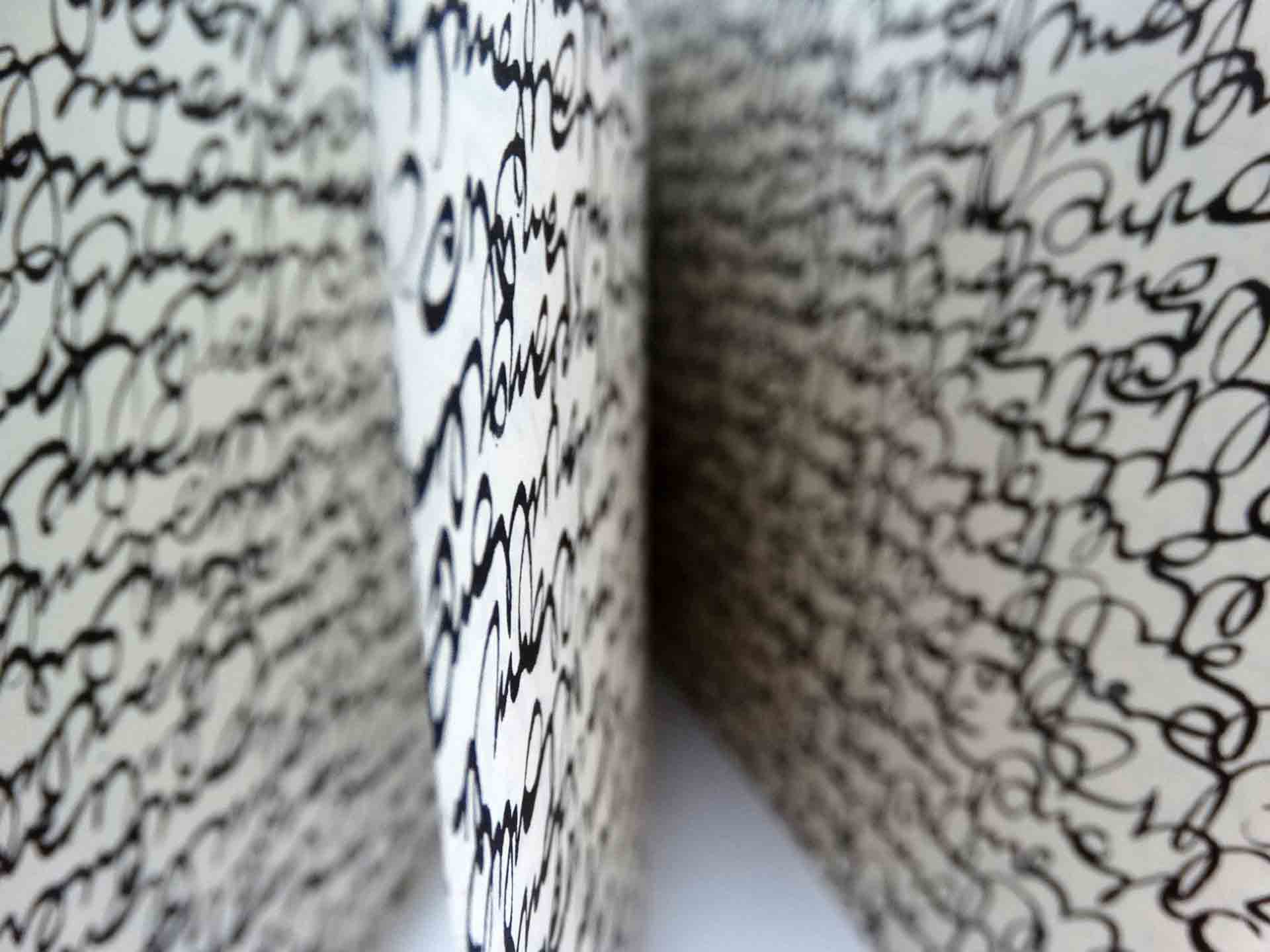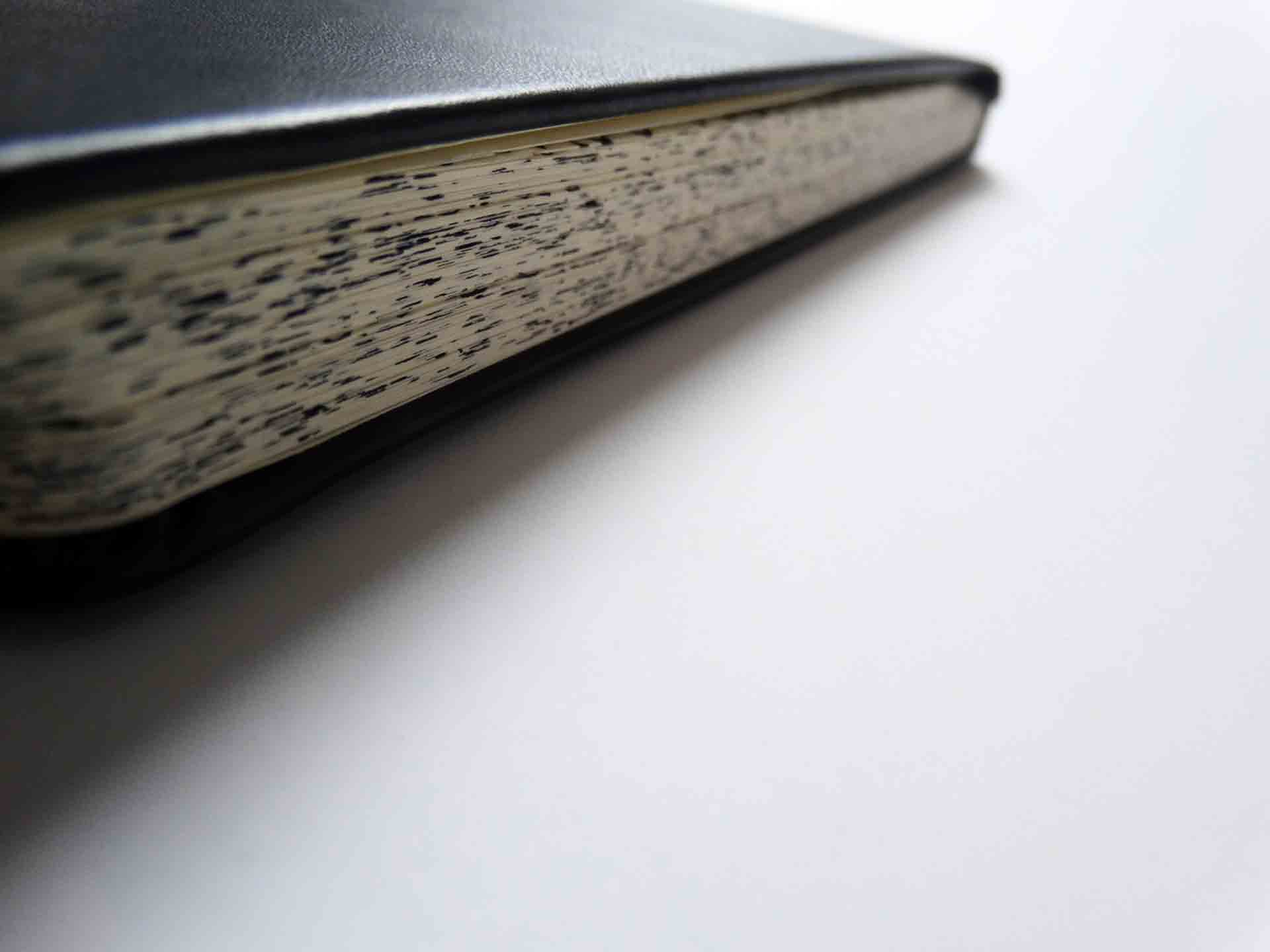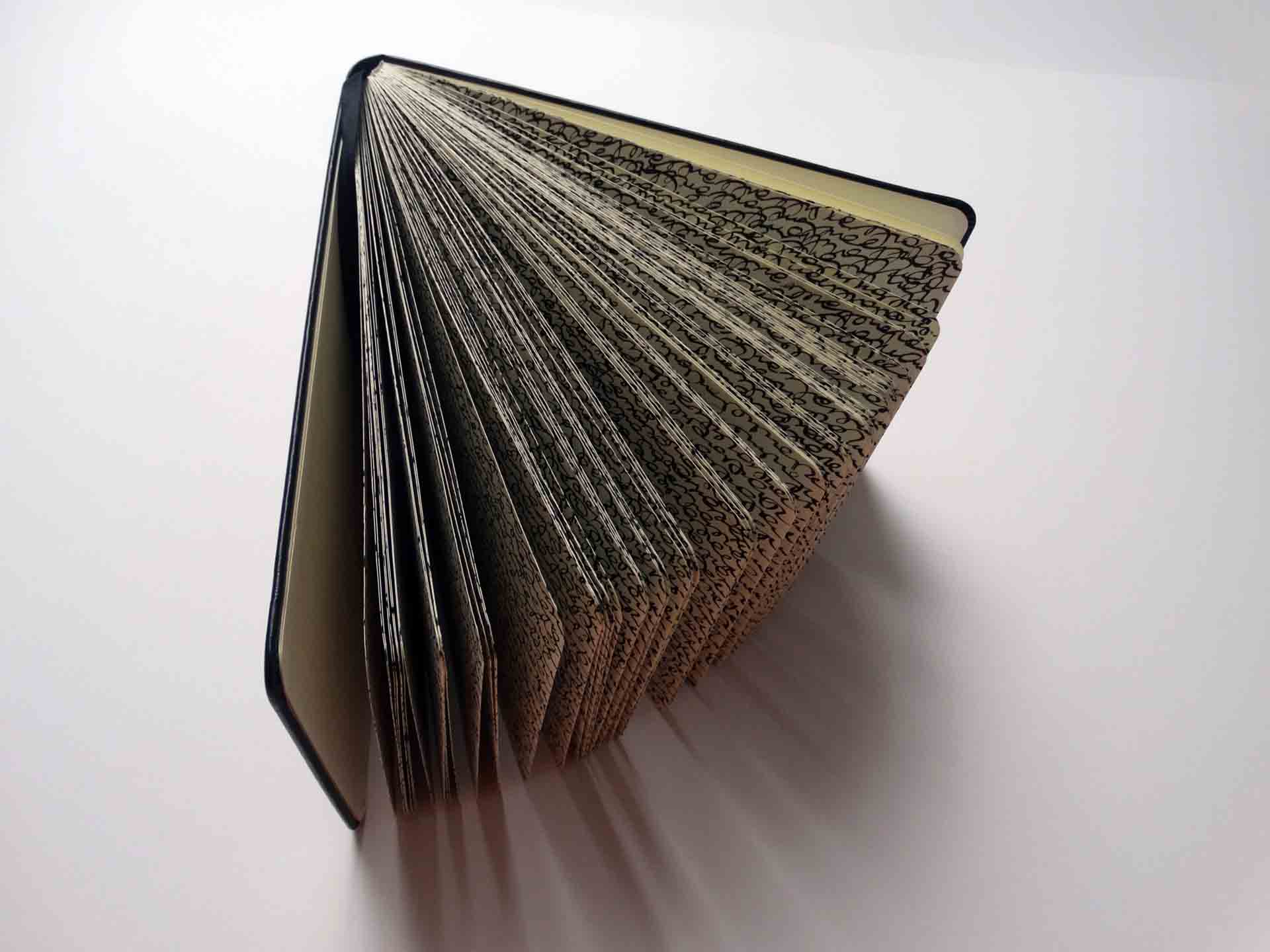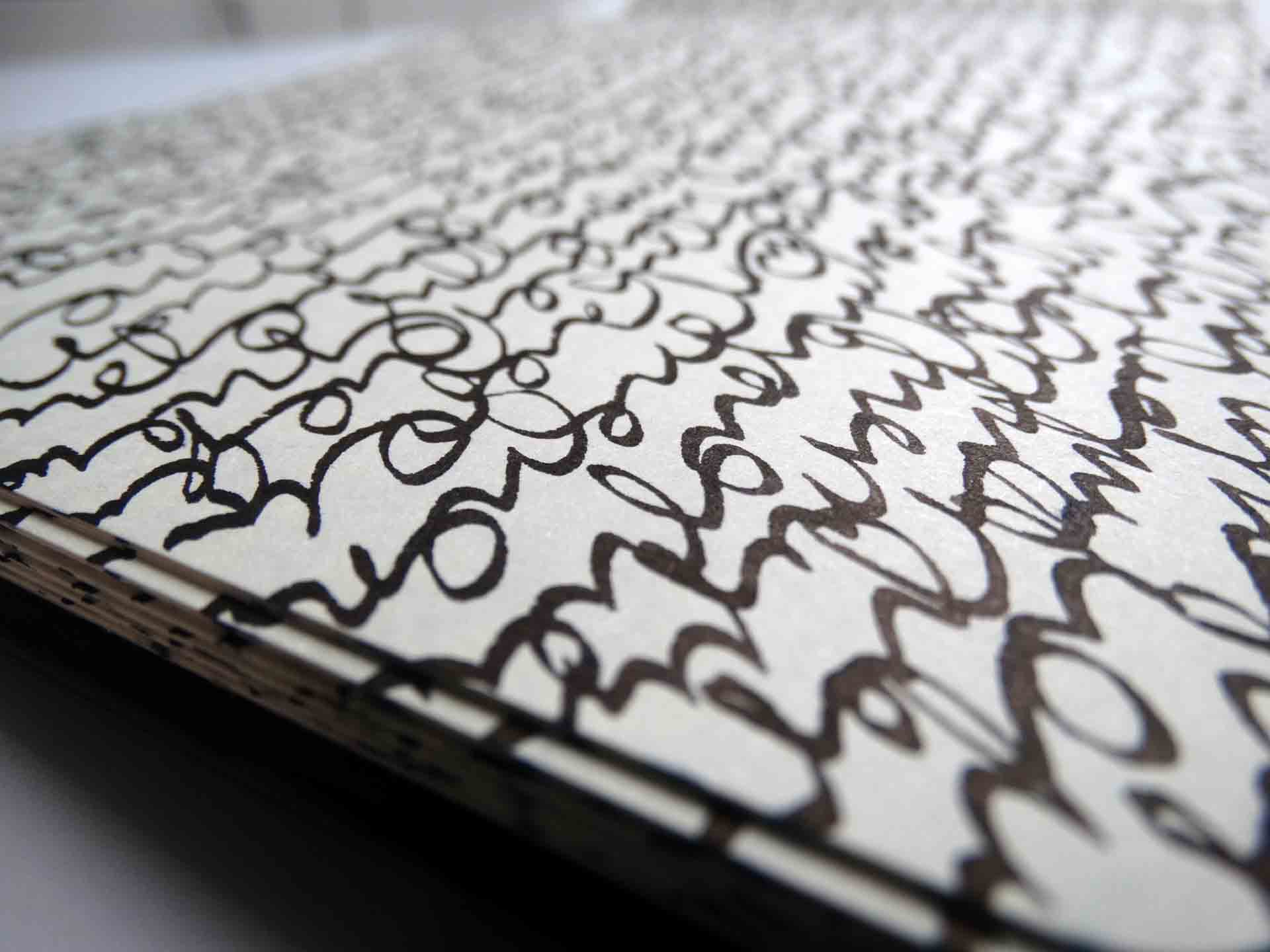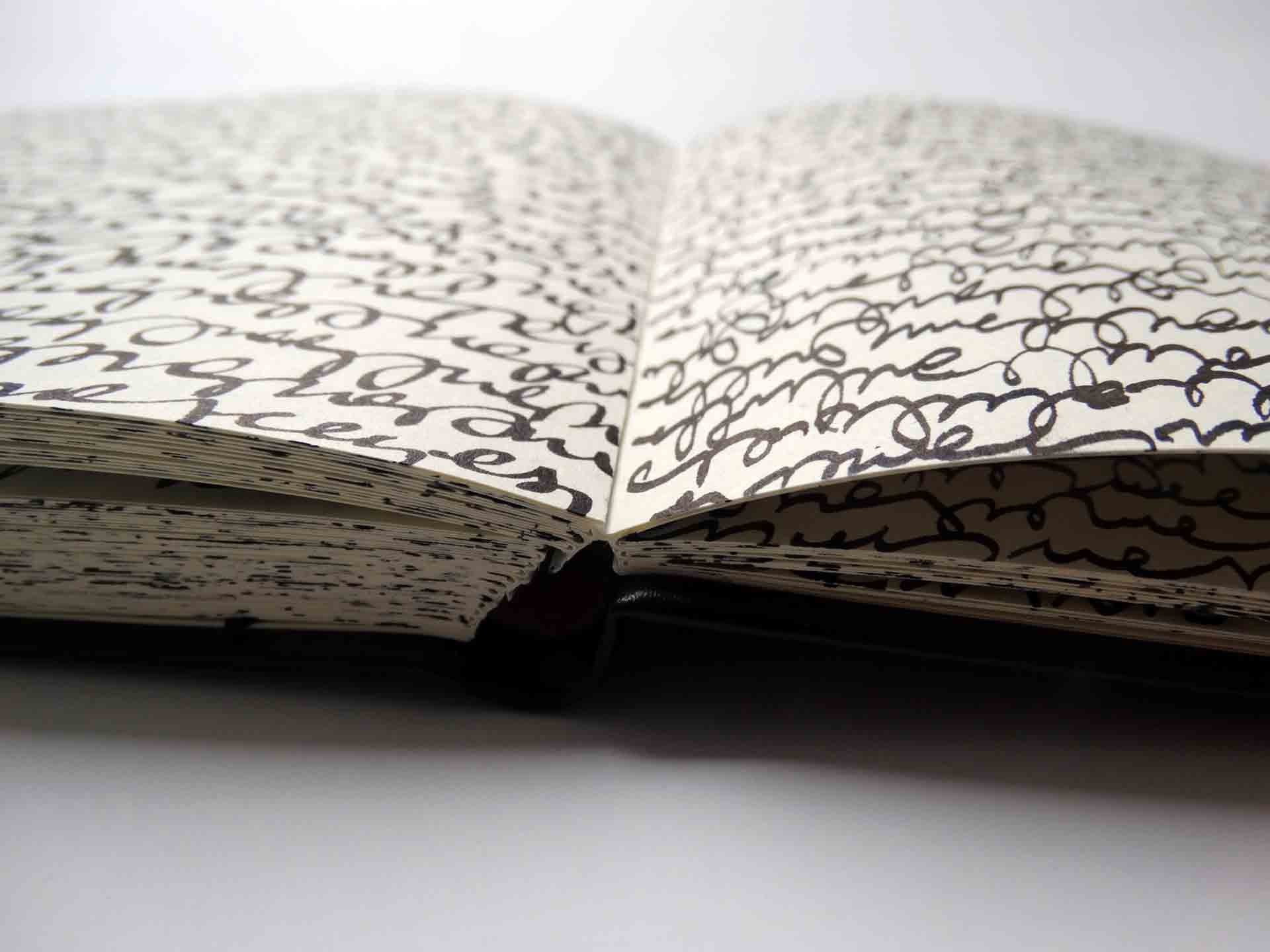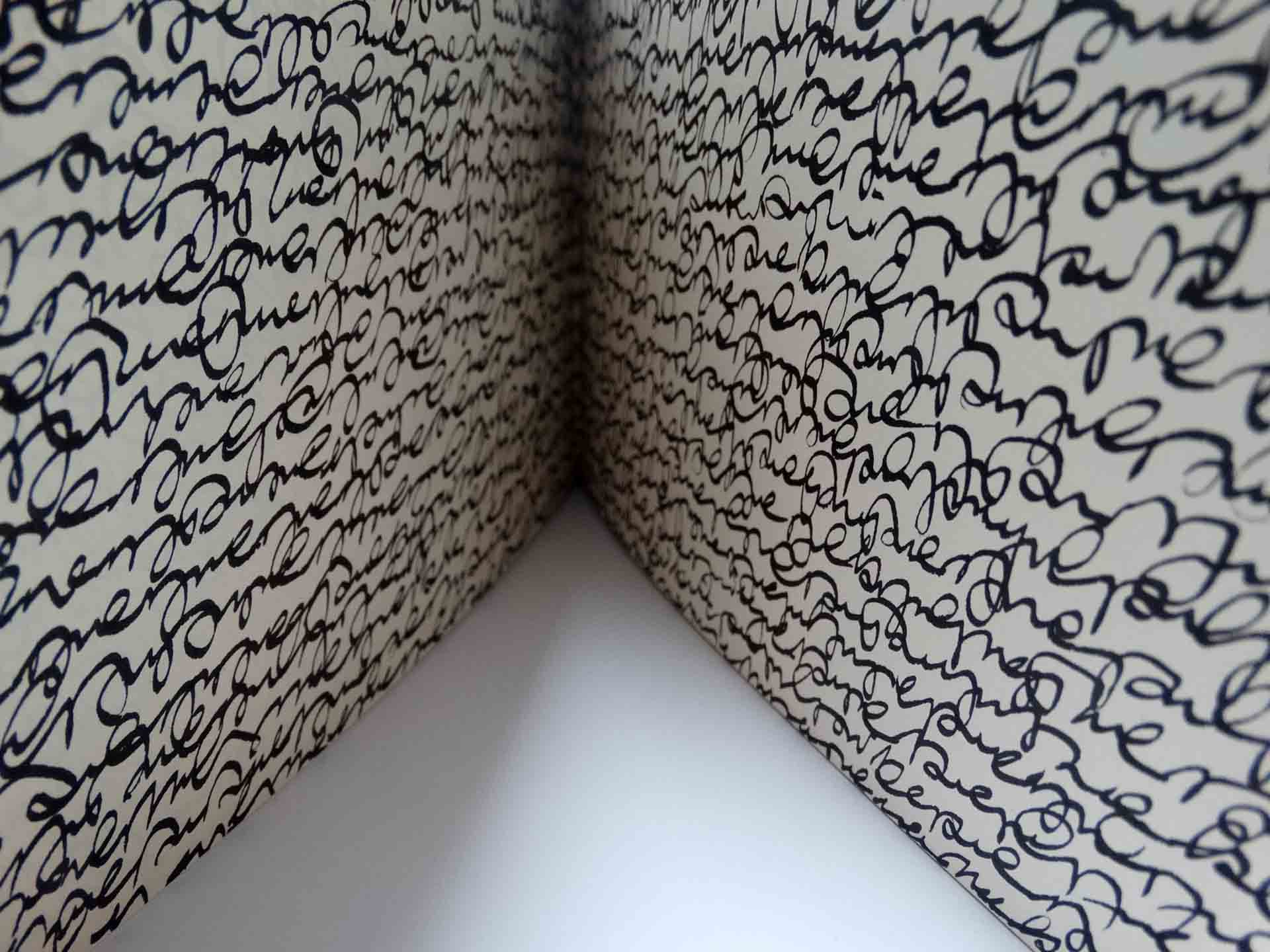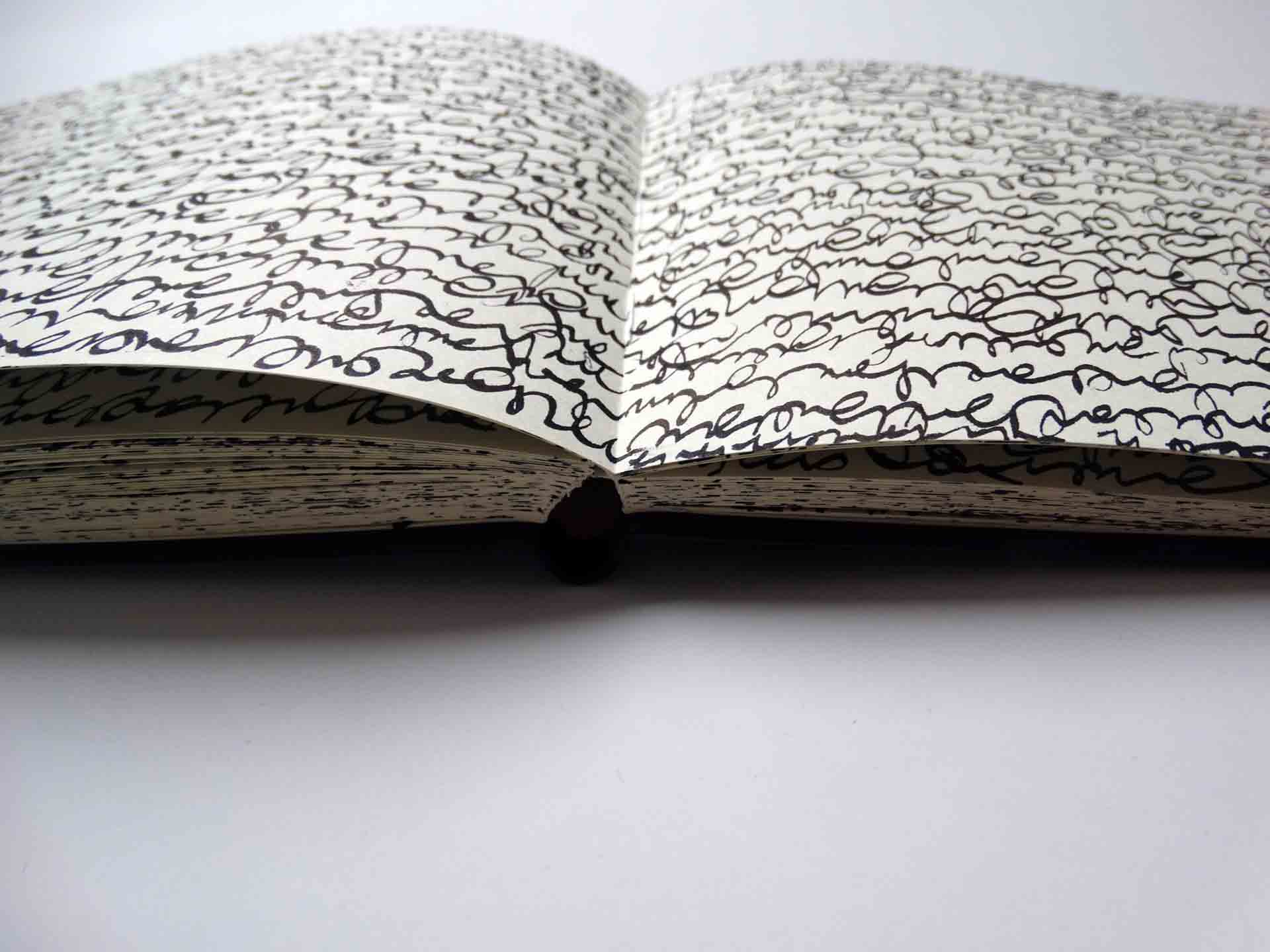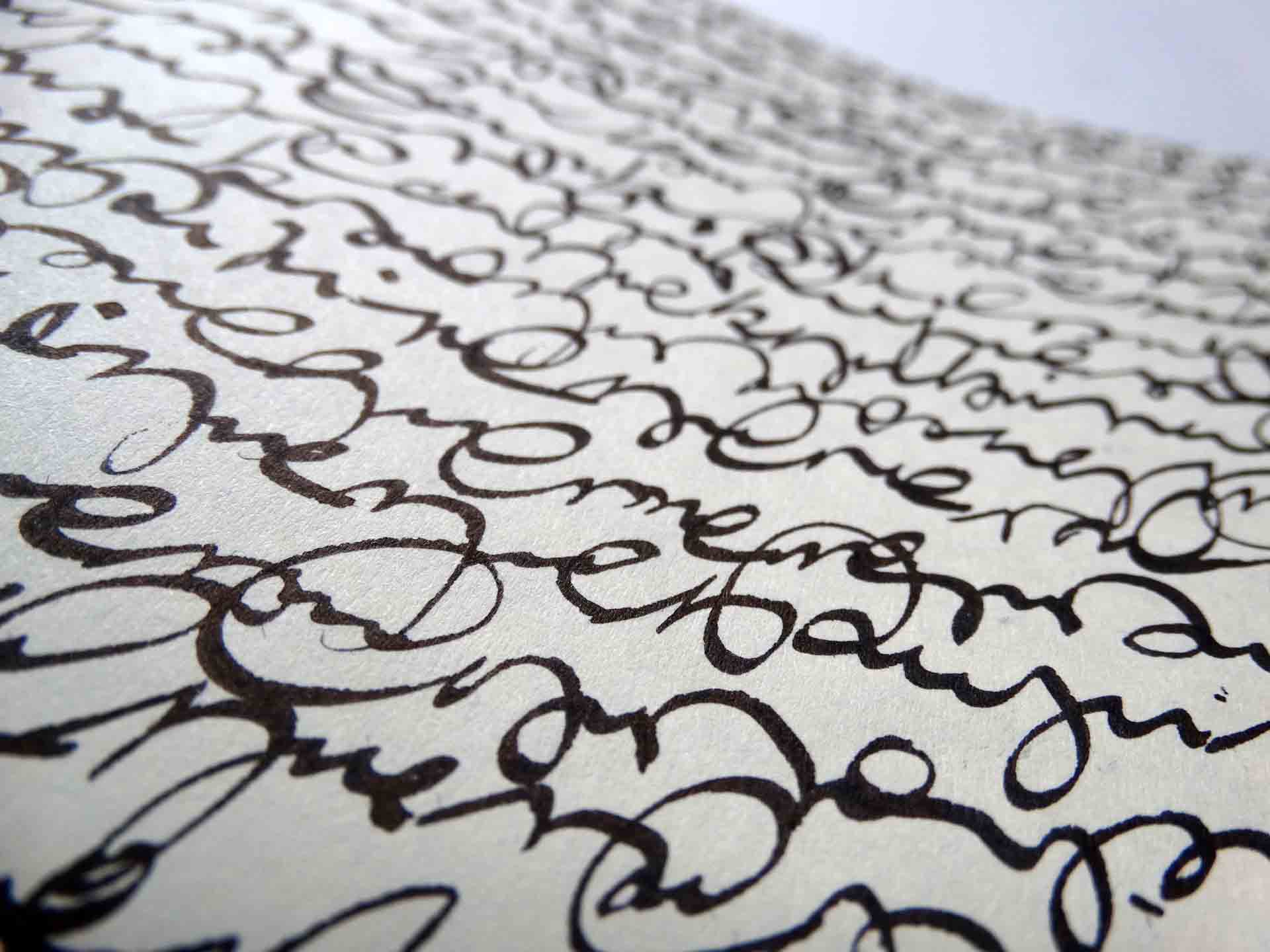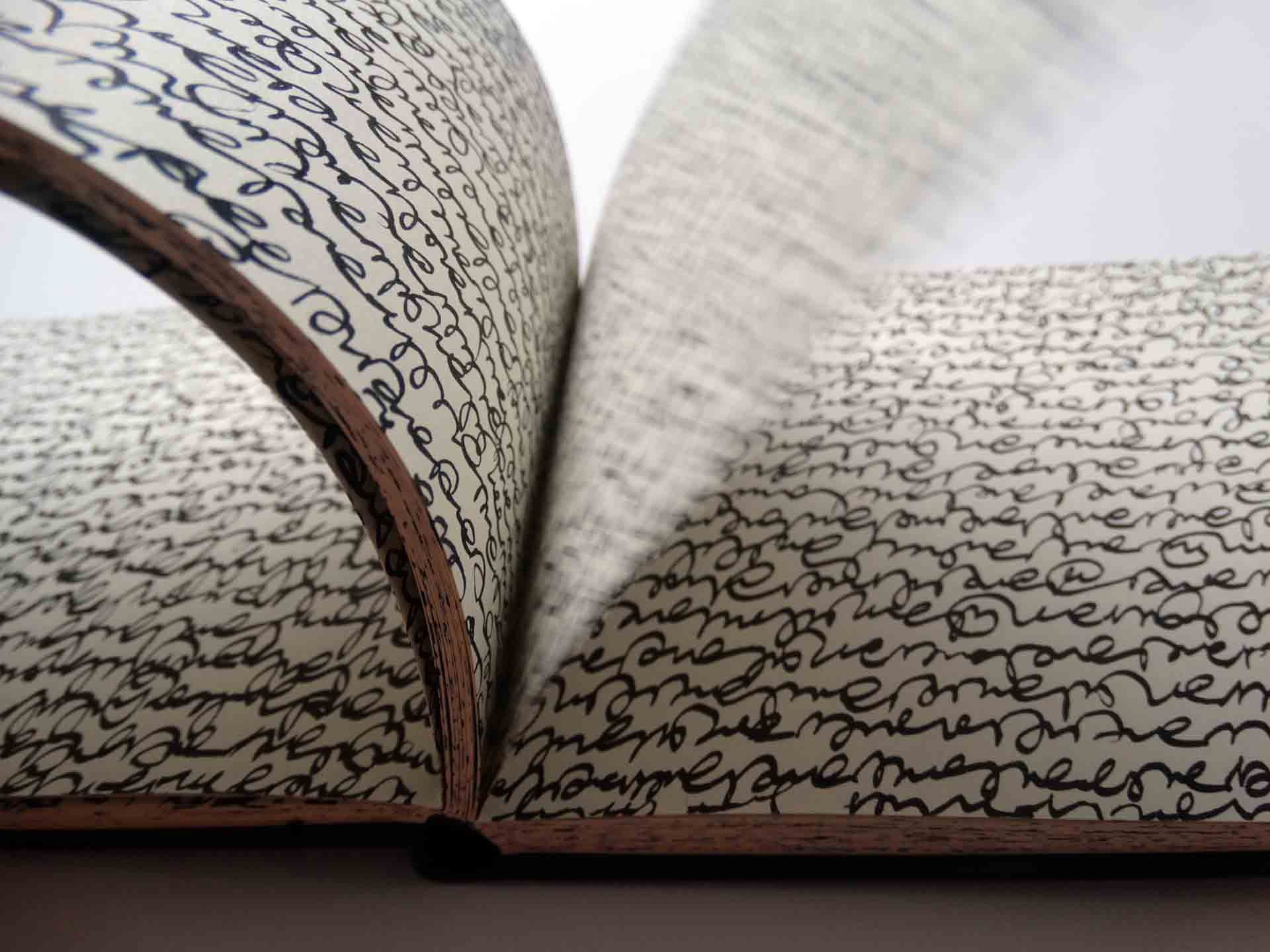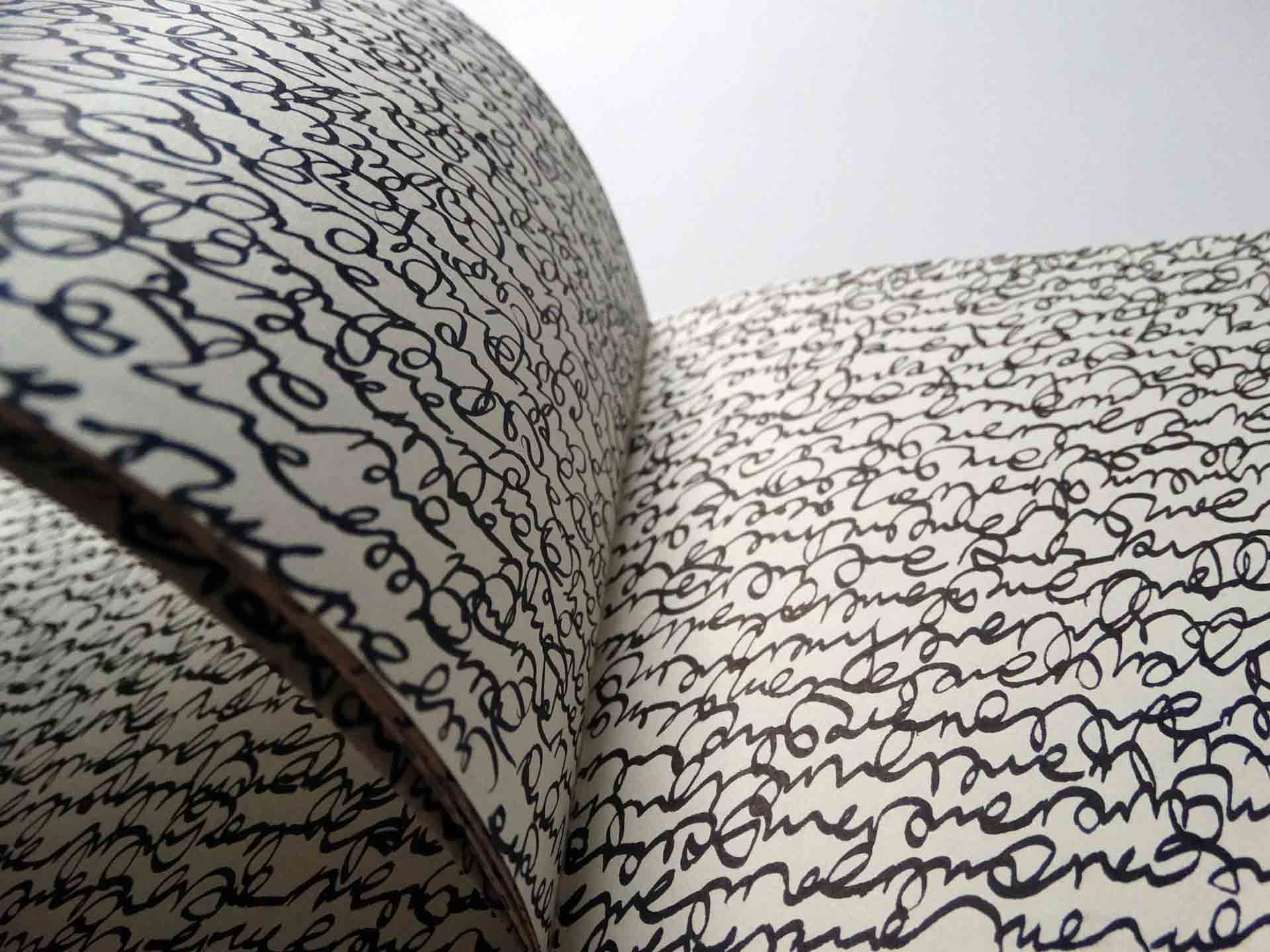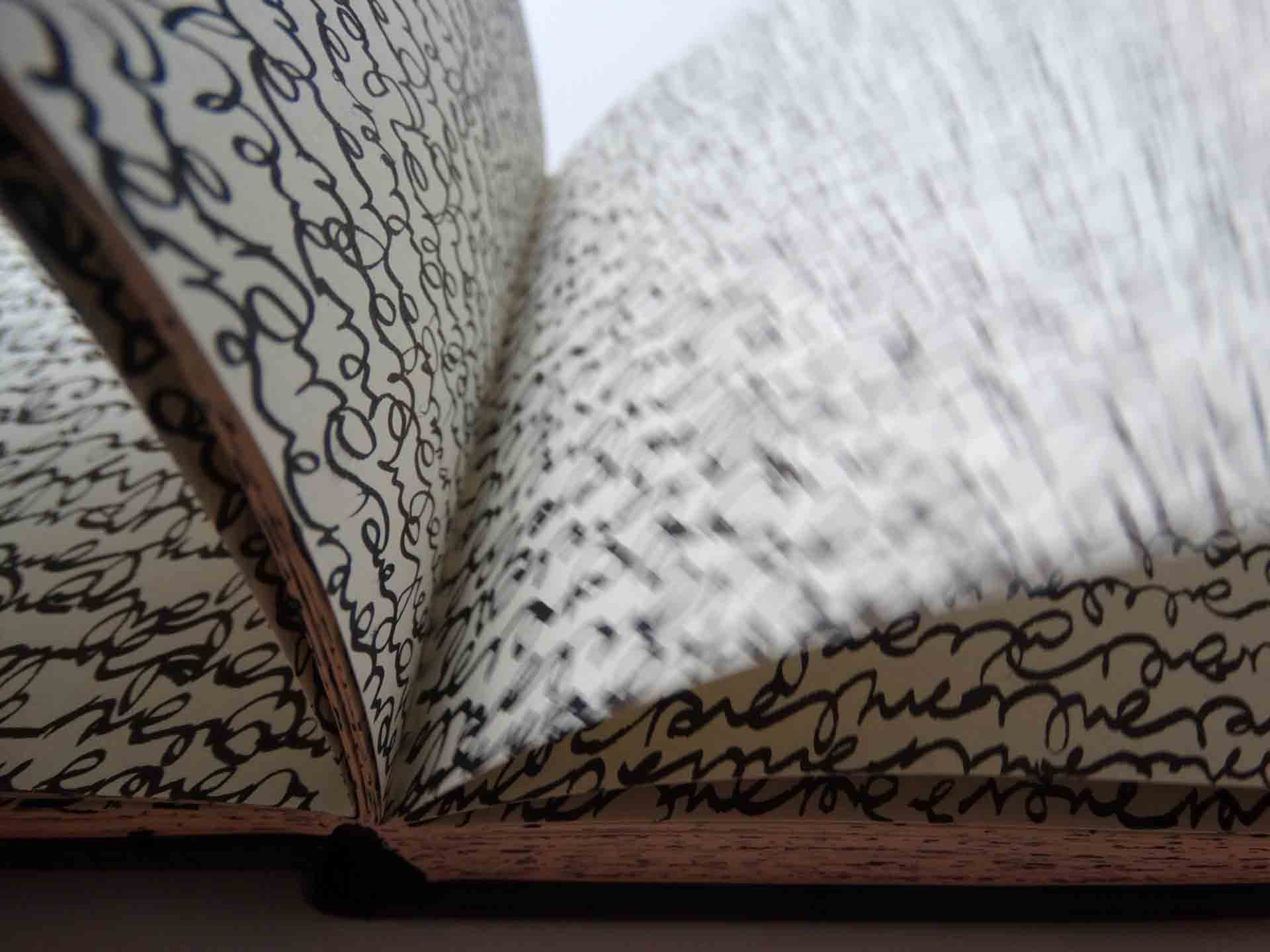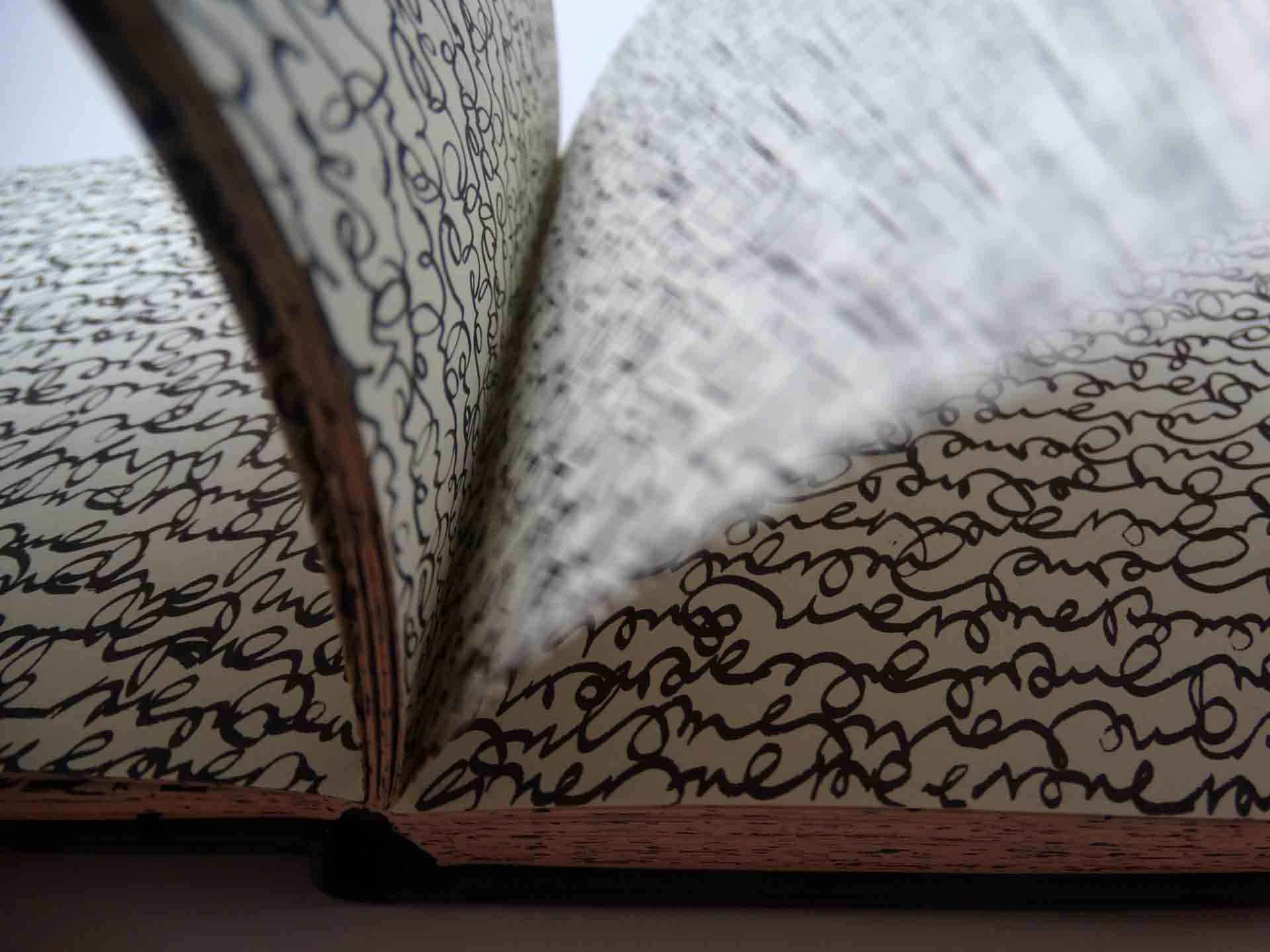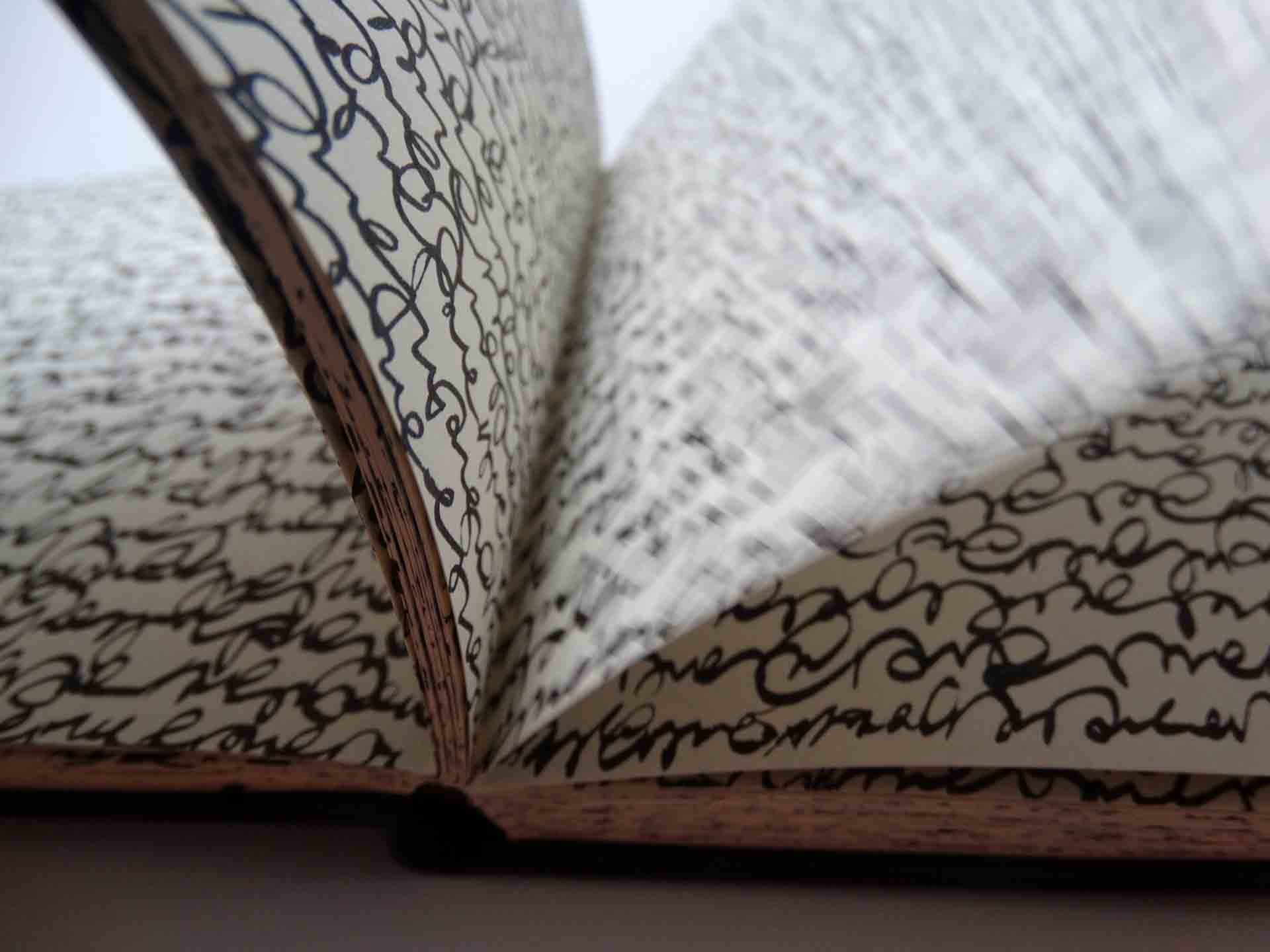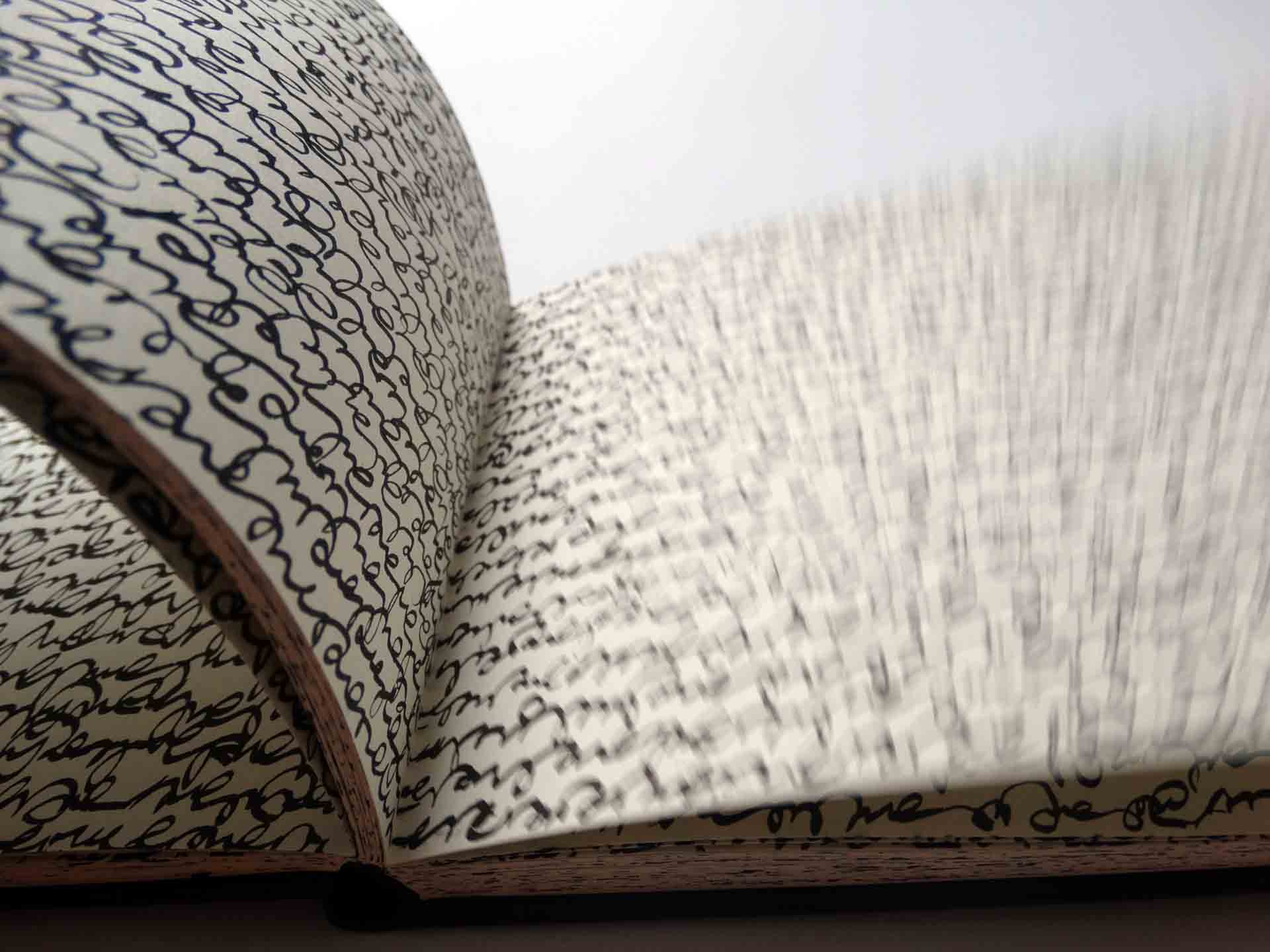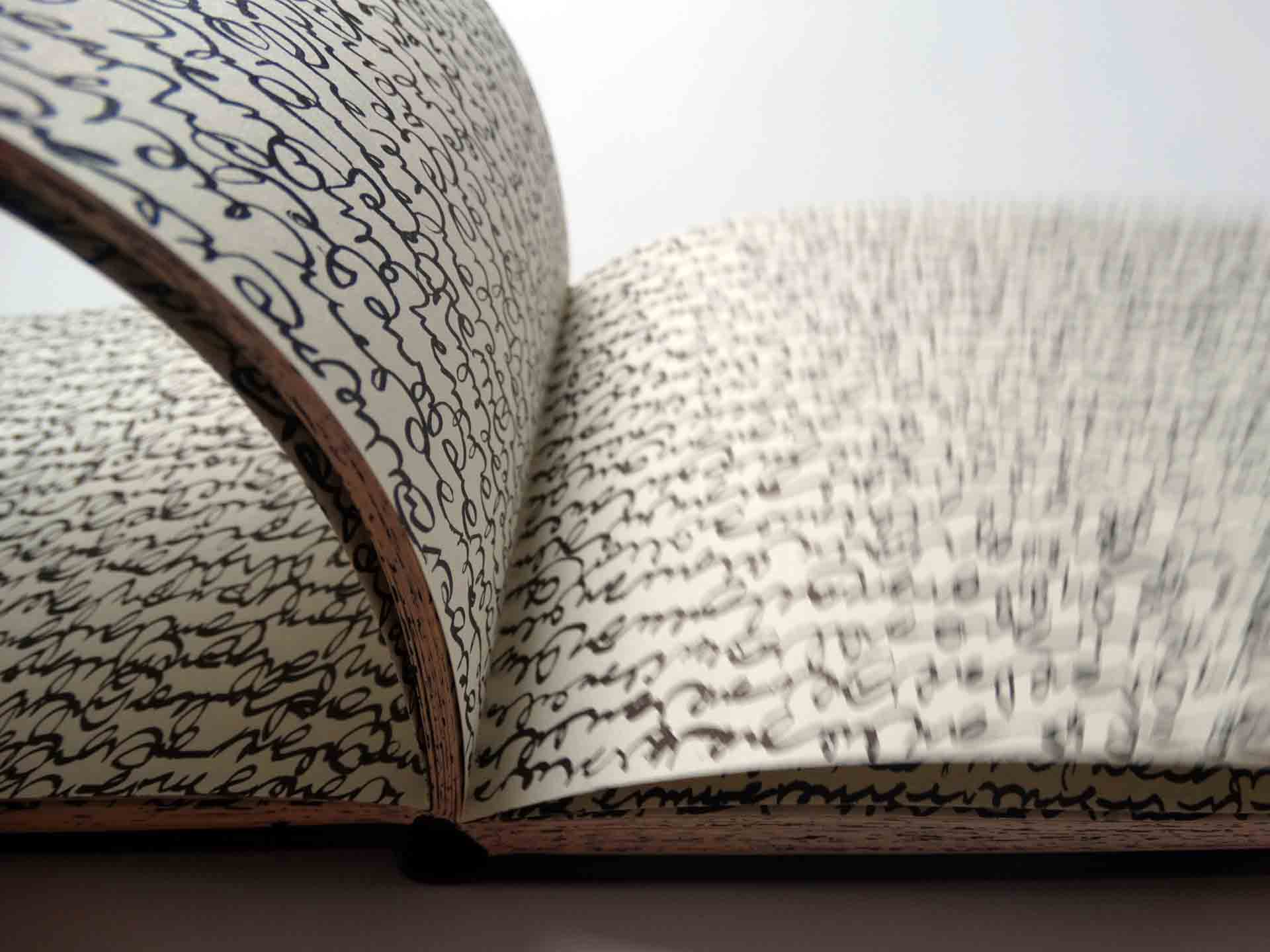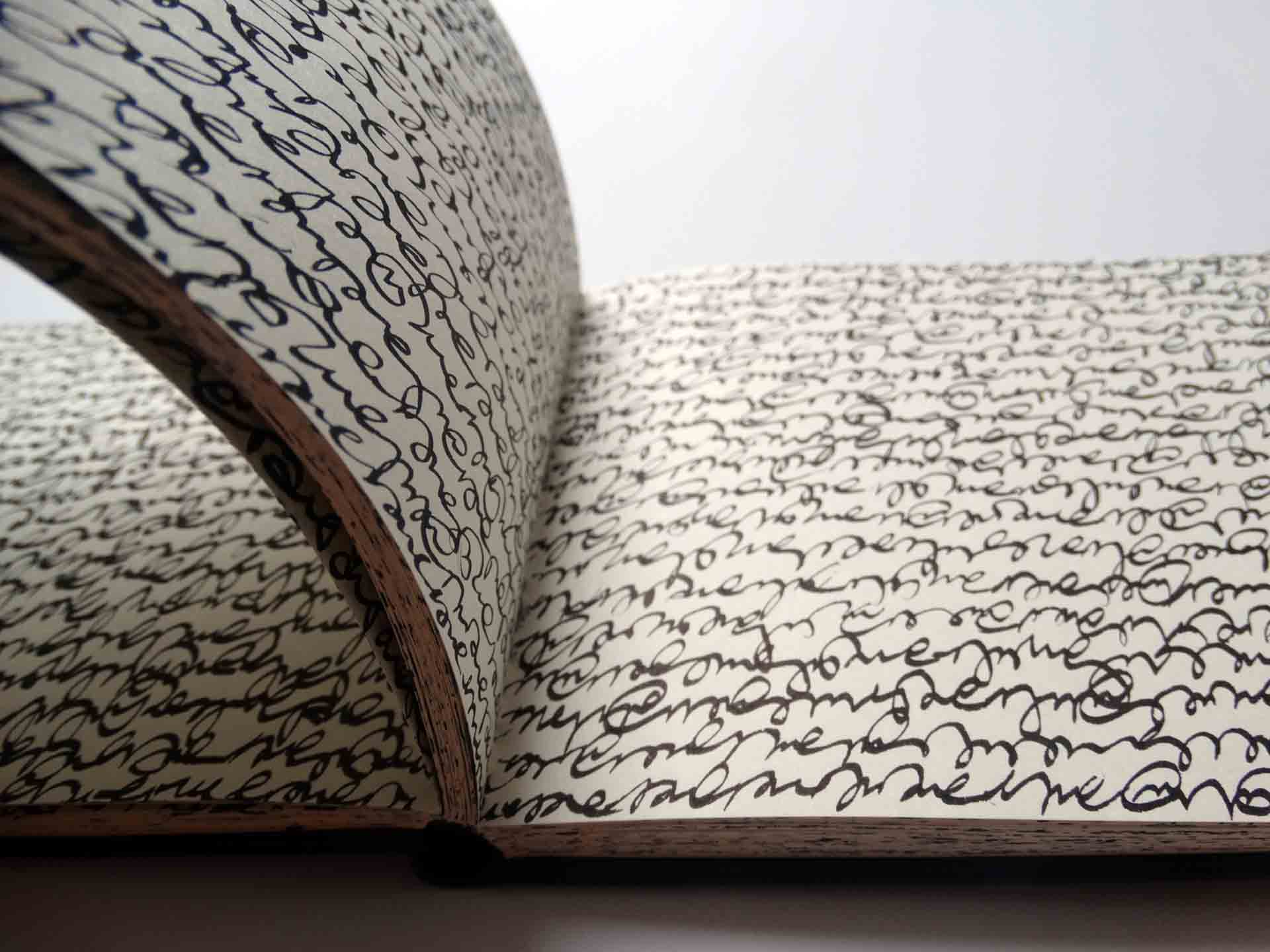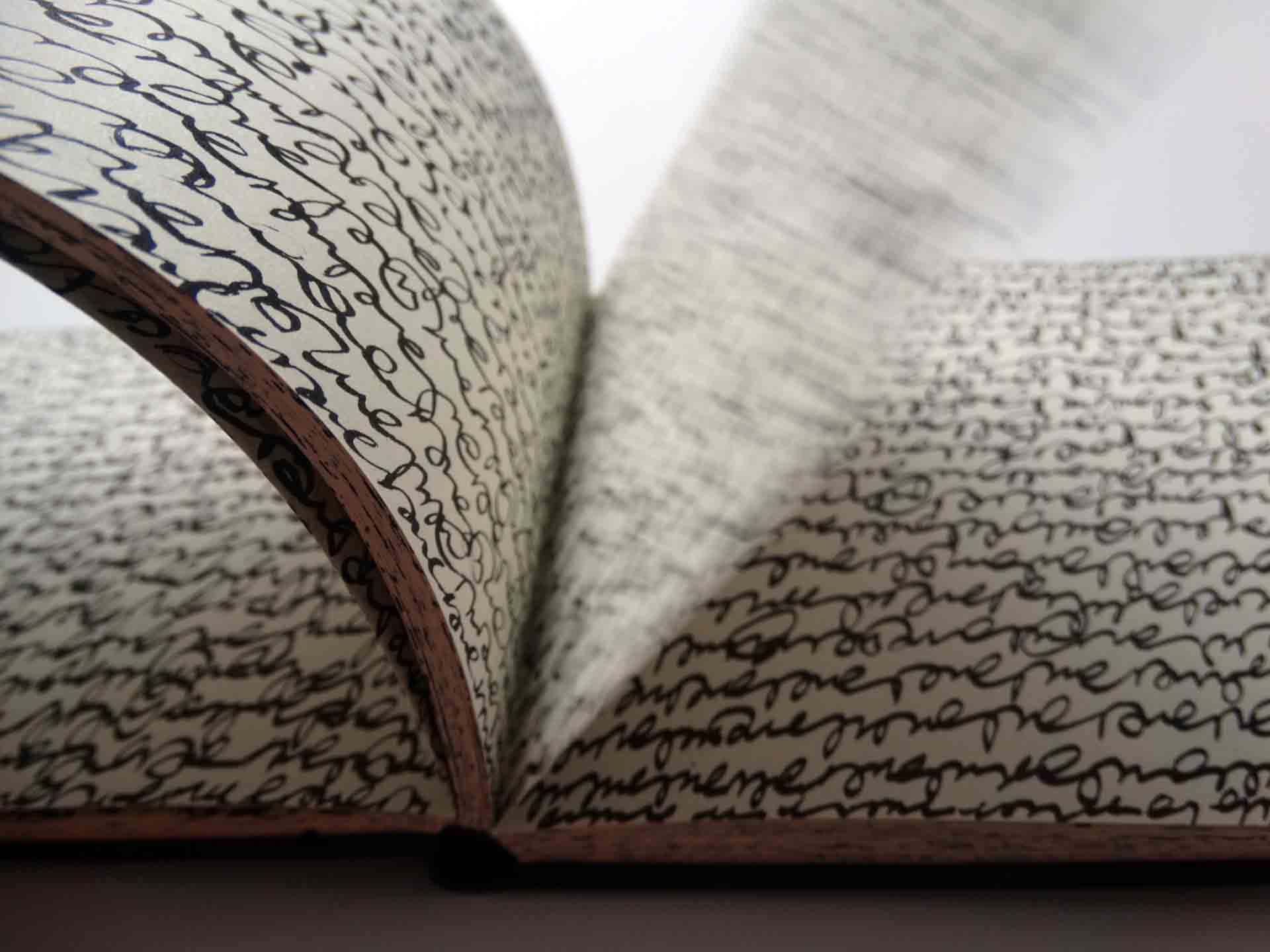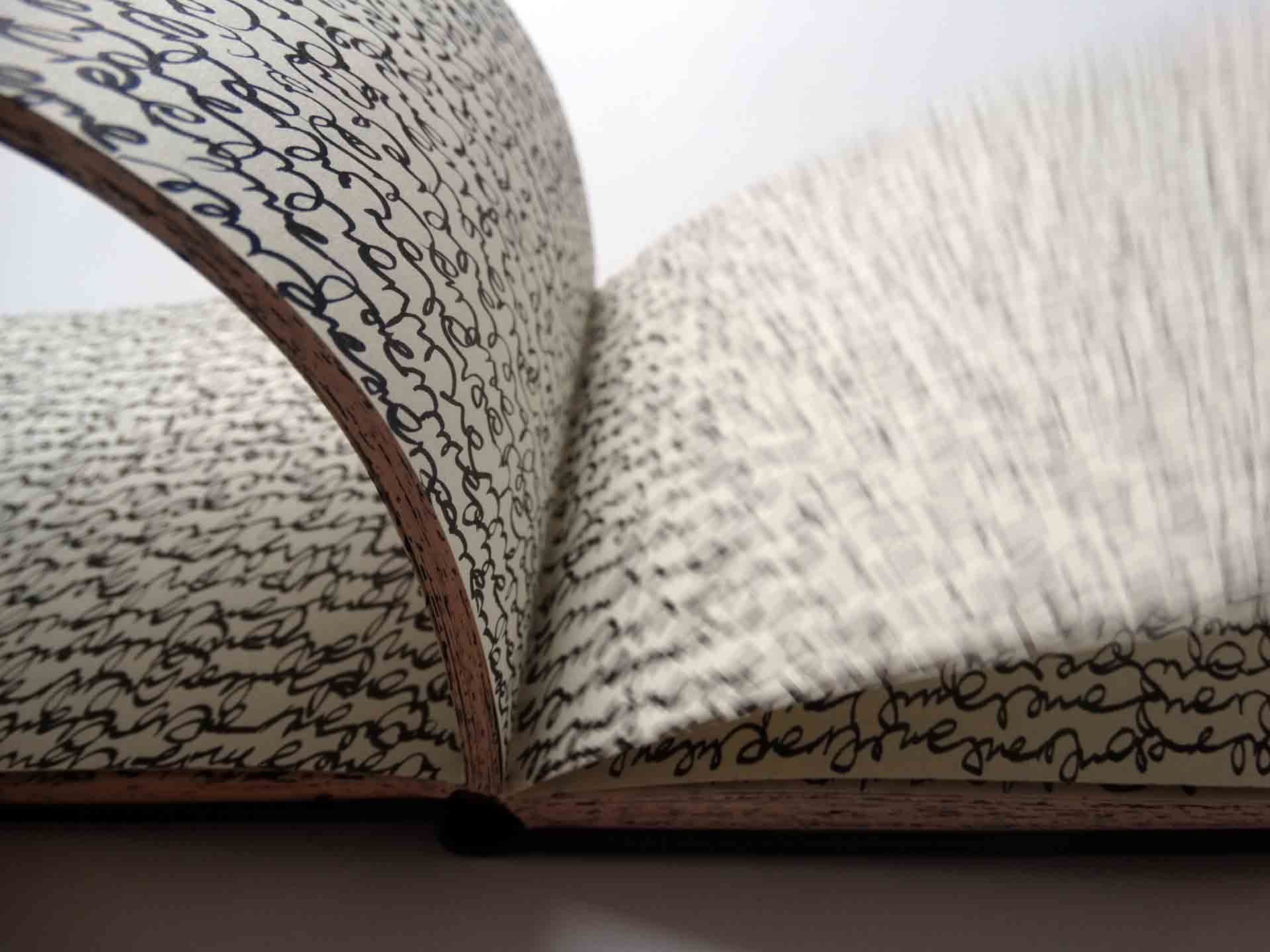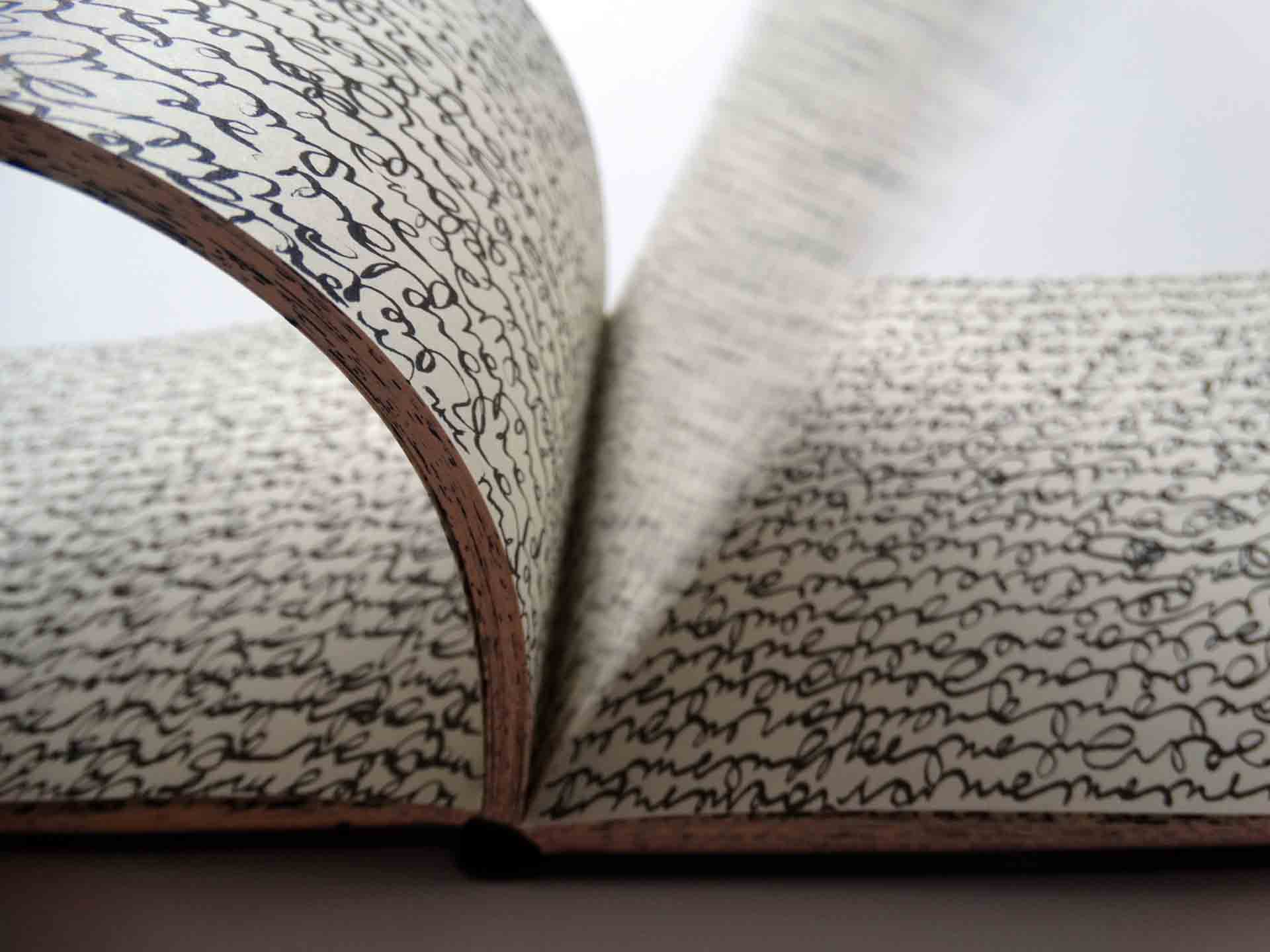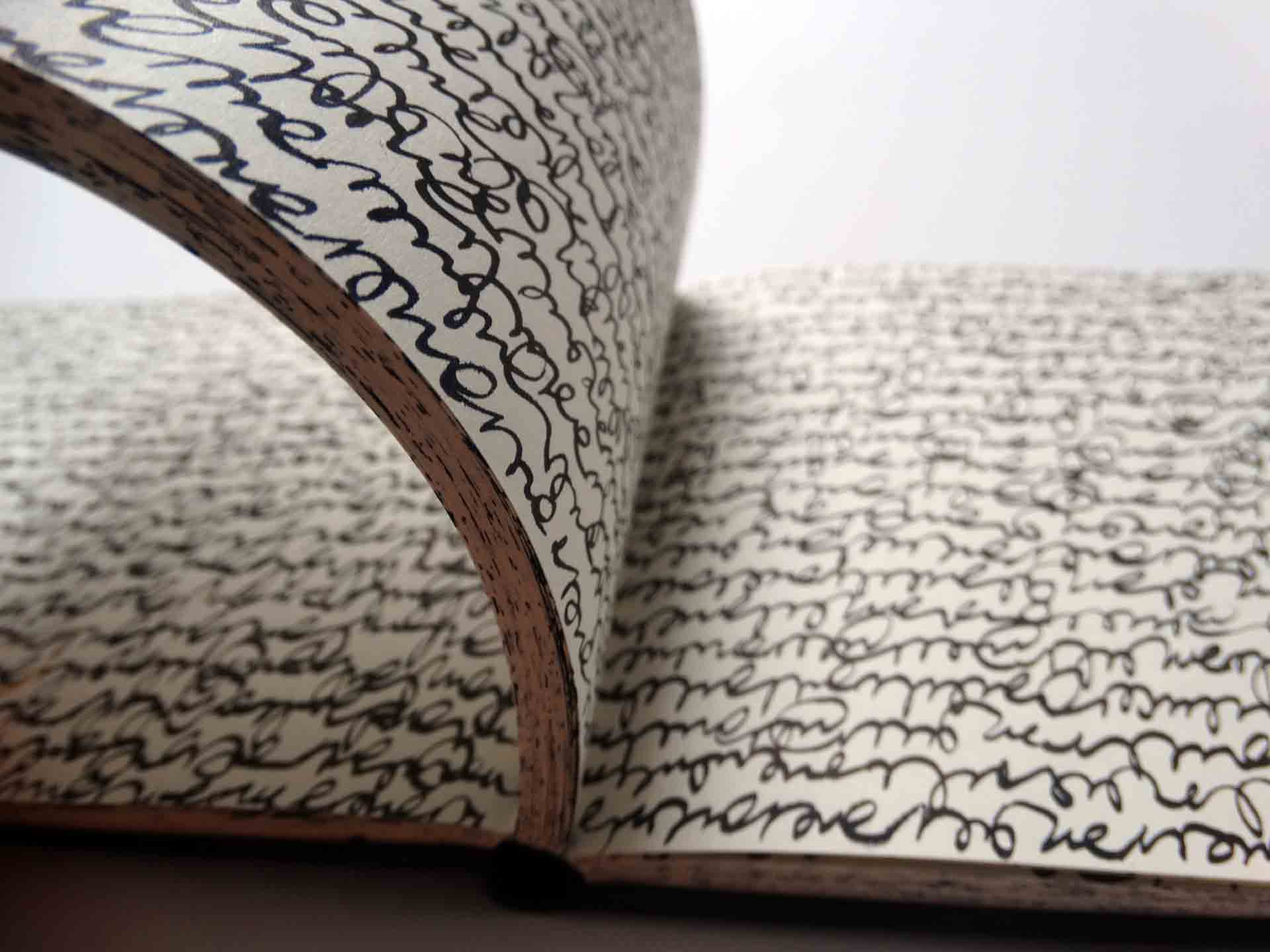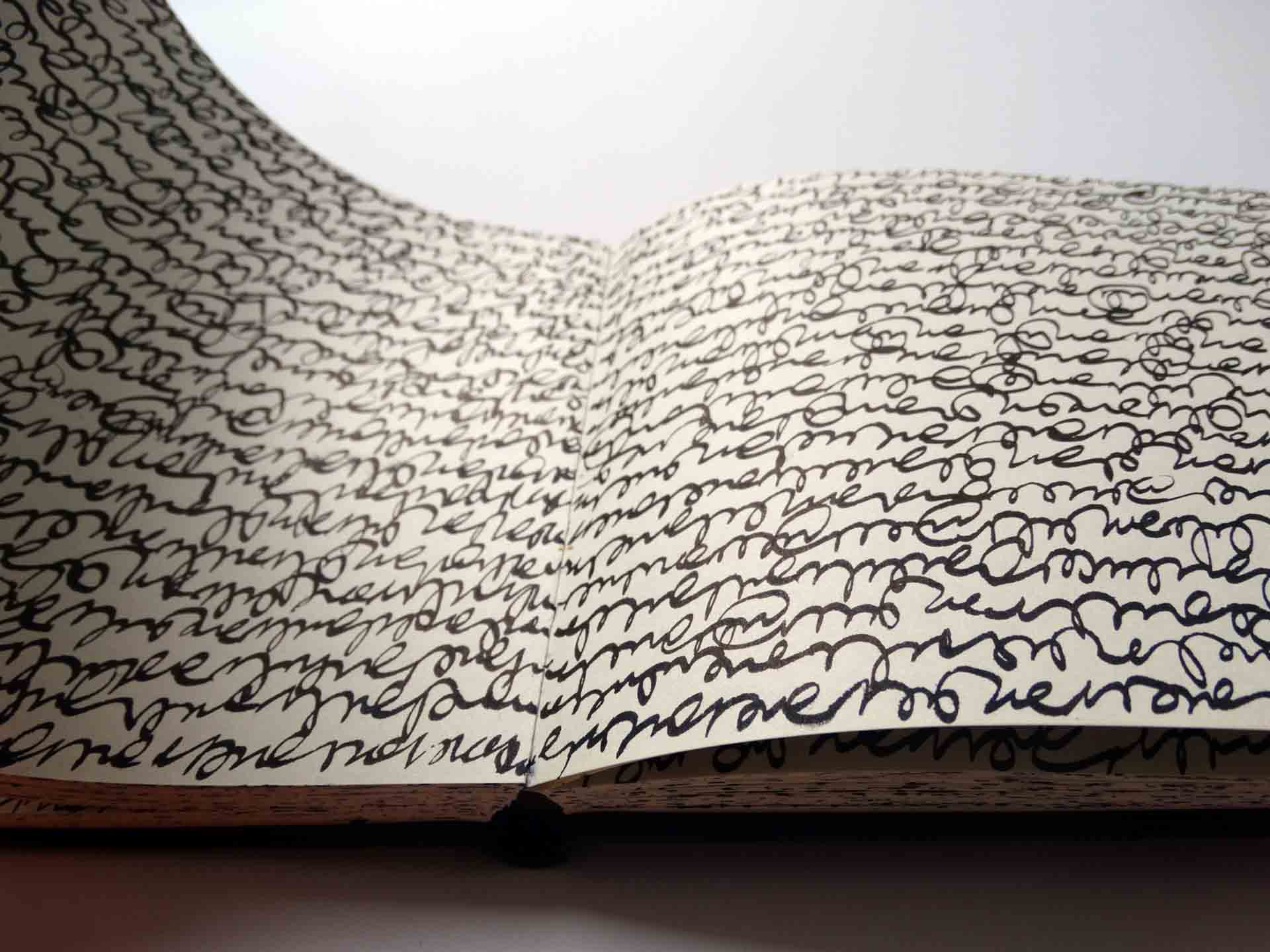Art book PANDEMICAL DIARY 2.0
From the cycle / z cyklu: ASEMIC WRITING
Art book PANDEMICAL DIARY 2.0 [11.2020-11.2021]
size: 208 x 140 mm, 158 pages
Książka artystyczna PAMIĘTNIK PANDEMICZNY 2.0 [11.2020-11.2021]
format: 208 x 140 mm, 158 stron
[ENG]
Pandemical Diary 2.0
Pandemical Diary 2.0 (11.2020–11.2021) is an art book that forms part of a cycle of experiments with asemic writing. It was created during the COVID-19 pandemic, when the experience of isolation, information overload, and the loss of stability required a new language. It is not a documentation of events but rather a record of emotional and mental rhythms that exceed the boundaries of verbal communication.
The dominant element of the diary is the continuous, uninterrupted flow of asemic writing. The graphic sign imitates the character of handwriting, but loses linguistic legibility. The repetition of gestures fills entire pages, transforming them into fields of intense visual expression. The absence of semantic anchoring becomes crucial here: the pandemic, as a state of excess and chaos, cannot find adequate expression in linear language. Asemia becomes an alternative – a language of silence, of impossibility, a trace of gesture that speaks precisely through the absence of meaning.
A formal analysis reveals the ritual character of the gesture. The daily inscription, repetitive and obsessive, resembles a mantra, a meditative practice, and at the same time automatic writing. The pages form visual, undulating fields – dense and saturated areas alternating with lighter, more open spaces. This rhythm can be read as a visual metaphor for the pandemic “waves” the rising and falling of emotions, fears, and moments of temporary calm. The diary thus functions as a graph of psychic tensions, encoded not in numbers but in the gestures of writing. In material terms, Pandemical Diary 2.0 appears as a densely inscribed artifact, whose thickness and weight amplify its meaning. The edges of the pages form an ornament resembling fabric or code — a visual sign of intensity. Close-up photographs reveal an additional dimension: asemic writing takes on the character of a landscape, a labyrinth in which the viewer’s eye loses orientation. The object thus exceeds the function of a book and becomes an immersive space a kind of landscape of memory and experience.
The most important paradox of the diary lies in the tension between excess and emptiness. On the one hand, each page is saturated with marks that generate a sense of visual cacophony. On the other the lack of semantics opens the whole to silence.
This paradox reflects the experience of the pandemic: the saturation of media space with messages, data, and fears, which ultimately failed to provide clarity and led to a sense of emptiness. Pandemical Diary 2.0 condenses this contradiction into artistic form.
Although the diary is intimate in character, the asemic nature of the inscription deprives it of private references. As a result, it acquires a universal dimension: every viewer may project their own experiences and emotions into the dense fabric of signs.
In this way, the work transcends autobiography and becomes a record of shared condition the individual gesture is transposed into the realm of collective experience.
Pandemical Diary 2.0 is thus an experimental diary which, instead of describing events, documents the emotions, rhythms, and tensions of the pandemic. Through asemic writing, the artist creates a language of crisis – a language of the unspoken and the untranslatable. The object functions both as archive and landscape: an archive of daily, repetitive gestures that testify to persistence in isolation, and a visual landscape in which the viewer may find echoes of their own experiences.
Thus, Pandemical Diary 2.0 is not only an art book but also a material testimony of its epoch – an attempt to capture what during the pandemic proved most difficult: the inexpressibility of experience.
[PL]
Pandemical Diary 2.0
Pandemical Diary 2.0 (11.2020–11.2021) to artbook będący częścią cyklu eksperymentów z pismem asemicznym. Powstał w okresie pandemii COVID-19, kiedy doświadczenie izolacji, nadmiaru informacji i poczucia utraty stabilności wymagało nowego języka. Nie była to dokumentacja wydarzeń, lecz zapis rytmów emocjonalnych i mentalnych, który przekracza granice komunikacji werbalnej. Dominującym elementem dziennika jest ciągły, nieprzerwany zapis asemiczny. Znak graficzny imituje charakter pisma, ale traci czytelność językową. Powtarzalność gestów wypełnia całość stron, zamieniając je w pola intensywnej ekspresji wizualnej.
Brak semantycznego zakotwiczenia staje się tu kluczowy: pandemia jako stan nadmiaru i chaosu nie znajduje odpowiedniego wyrazu w języku linearnym. Asemia staje się alternatywą – językiem ciszy, zapisu niemożności, śladem gestu, który mówi właśnie poprzez brak znaczenia. Analiza formalna ukazuje rytualny charakter gestu. Codzienny zapis, powtarzalny i obsesyjny, przypomina mantrę, praktykę medytacyjną, a zarazem automatyczne pisanie. Strony tworzą wizualne pola falujące – miejsca gęste i nasycone obok obszarów bardziej rozrzedzonych. Ten rytm można odczytać jako wizualną metaforę pandemicznych „fal” – narastania i opadania emocji, lęków i chwilowego uspokojenia. Dziennik funkcjonuje zatem jako wykres napięć psychicznych, choć zakodowany nie w liczbach, lecz w gestach pisma.
W ujęciu materialnym Pandemical Diary 2.0 jawi się jako artefakt gęsto zapisany, którego grubość i ciężar potęgują znaczenie. Krawędzie stron tworzą ornament przypominający tkaninę lub kod – wizualny znak intensywności.
Fotografie zbliżeniowe ujawniają dodatkowy wymiar: asemiczne pismo zyskuje charakter pejzażu, labiryntu, w którym oko odbiorcy traci orientację. Obiekt przekracza więc funkcję książki i staje się przestrzenią immersyjną – rodzajem krajobrazu pamięci i doświadczeń. Najważniejszym paradoksem dziennika jest napięcie między nadmiarem a pustką. Z jednej strony każda strona jest przesycona znakami, które budują poczucie wizualnej kakofonii. Z drugiej – brak semantyki sprawia, że całość otwiera się na ciszę.
Ten paradoks odpowiada doświadczeniu pandemii: wypełnienia przestrzeni medialnej komunikatami, danymi i lękami, które ostatecznie nie dawały jasnego sensu i prowadziły do poczucia pustki. Pandemical Diary 2.0 kondensuje tę sprzeczność w formie artystycznej.
Choć pamiętnik ma charakter intymny, asemiczność zapisu pozbawia go prywatnych odniesień. W efekcie dziennik nabiera wymiaru uniwersalnego: każdy odbiorca może projektować własne doświadczenia i emocje w gęstą tkankę znaków. W ten sposób książka przekracza granicę autobiografii i staje się zapisem wspólnej kondycji – jednostkowy gest przenosi się w przestrzeń kolektywnego doświadczenia.
Pandemical Diary 2.0 to eksperymentalny pamiętnik, który zamiast opisywać wydarzenia, dokumentuje emocje, rytmy i napięcia czasu pandemii. Poprzez asemiczne pismo artystka tworzy język kryzysu – język niewypowiedzianego i nieprzekładalnego.
Obiekt ten stanowi zarazem archiwum i krajobraz: archiwum gestów codziennych, powtarzalnych, które są świadectwem trwania w izolacji, oraz krajobraz wizualny, w którym odbiorca może odnaleźć echo własnych przeżyć.
Pandemical Diary 2.0 jest więc nie tylko artbookiem, ale także materialnym świadectwem epoki – próbą uchwycenia tego, co w czasie pandemii okazało się najtrudniejsze: niewyrażalności doświadczenia.
🙂
